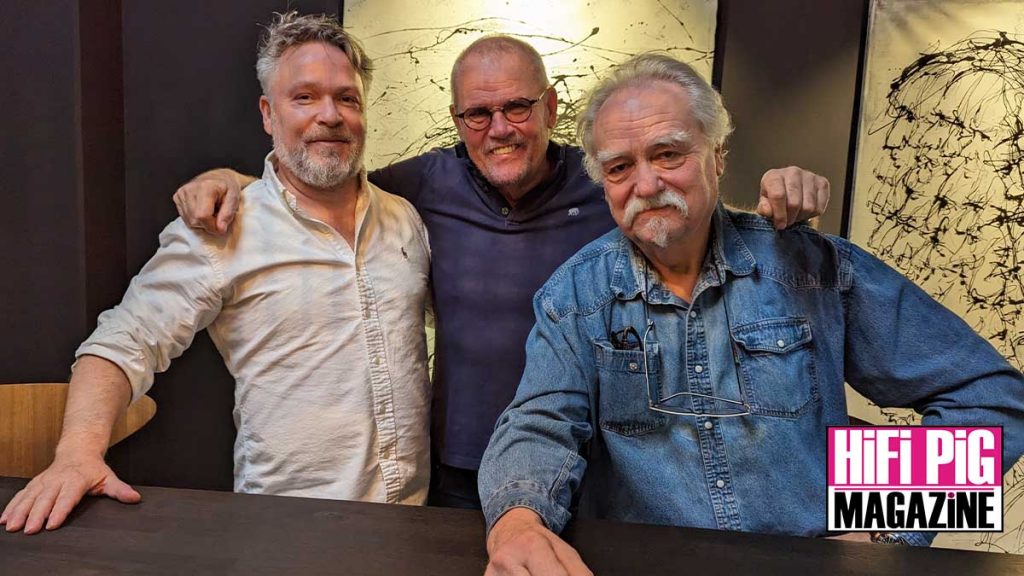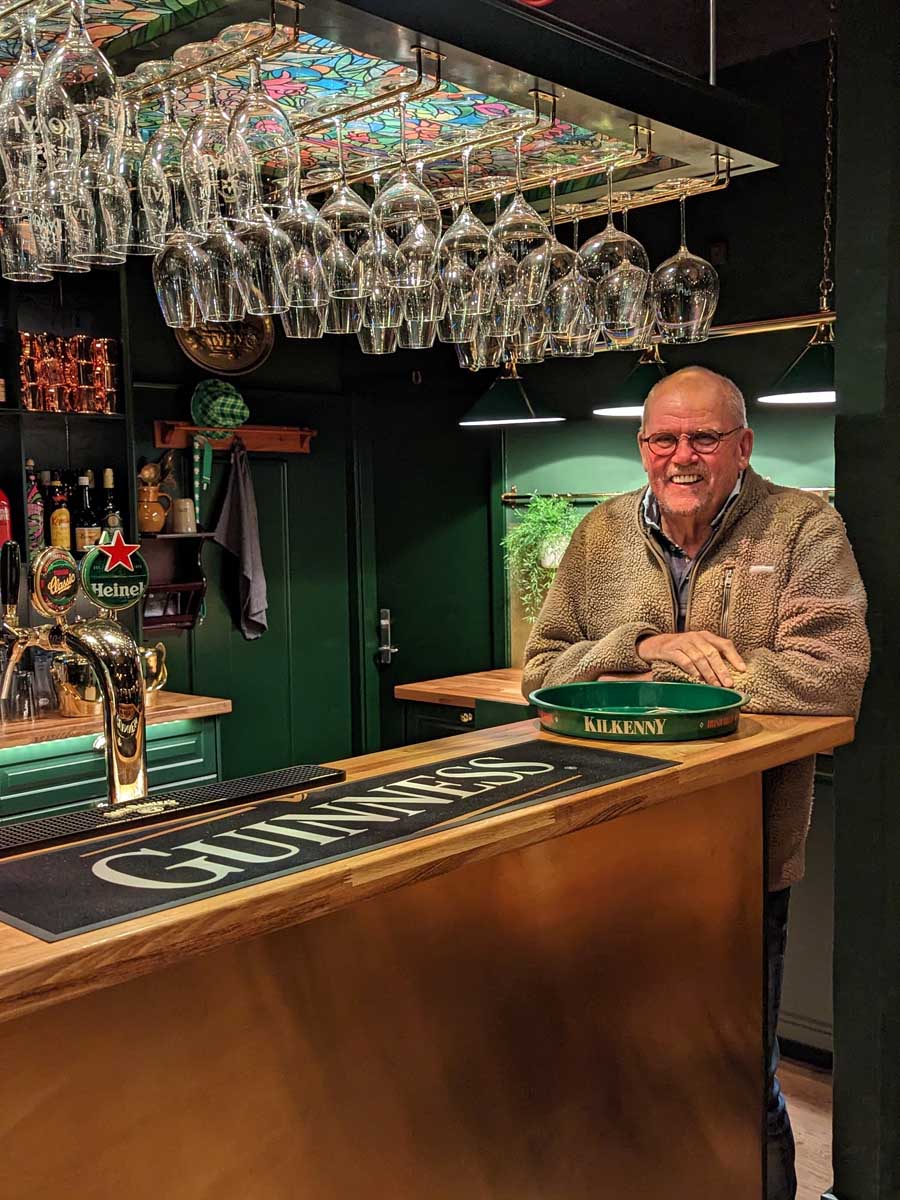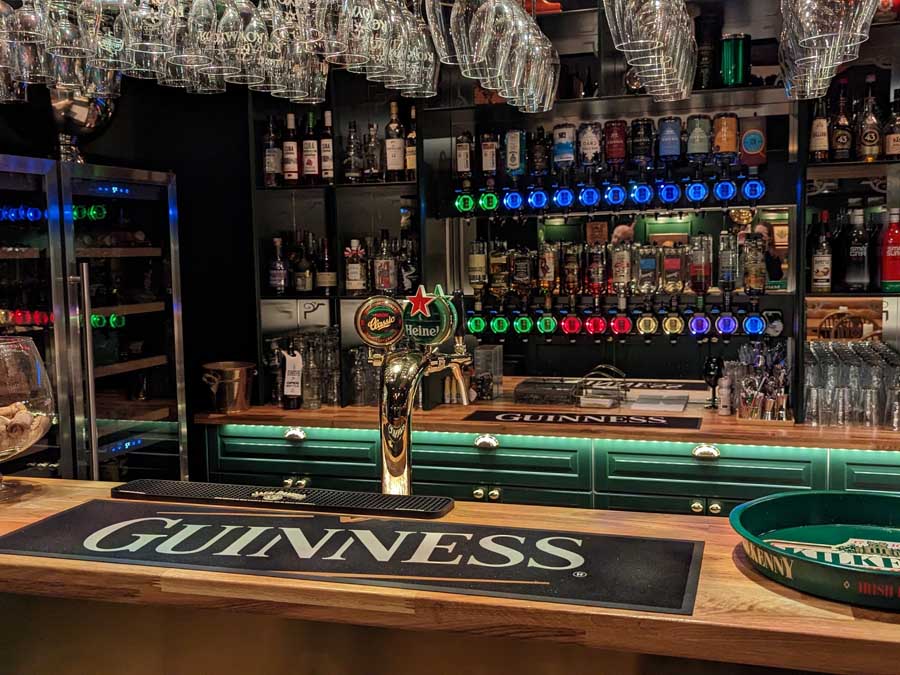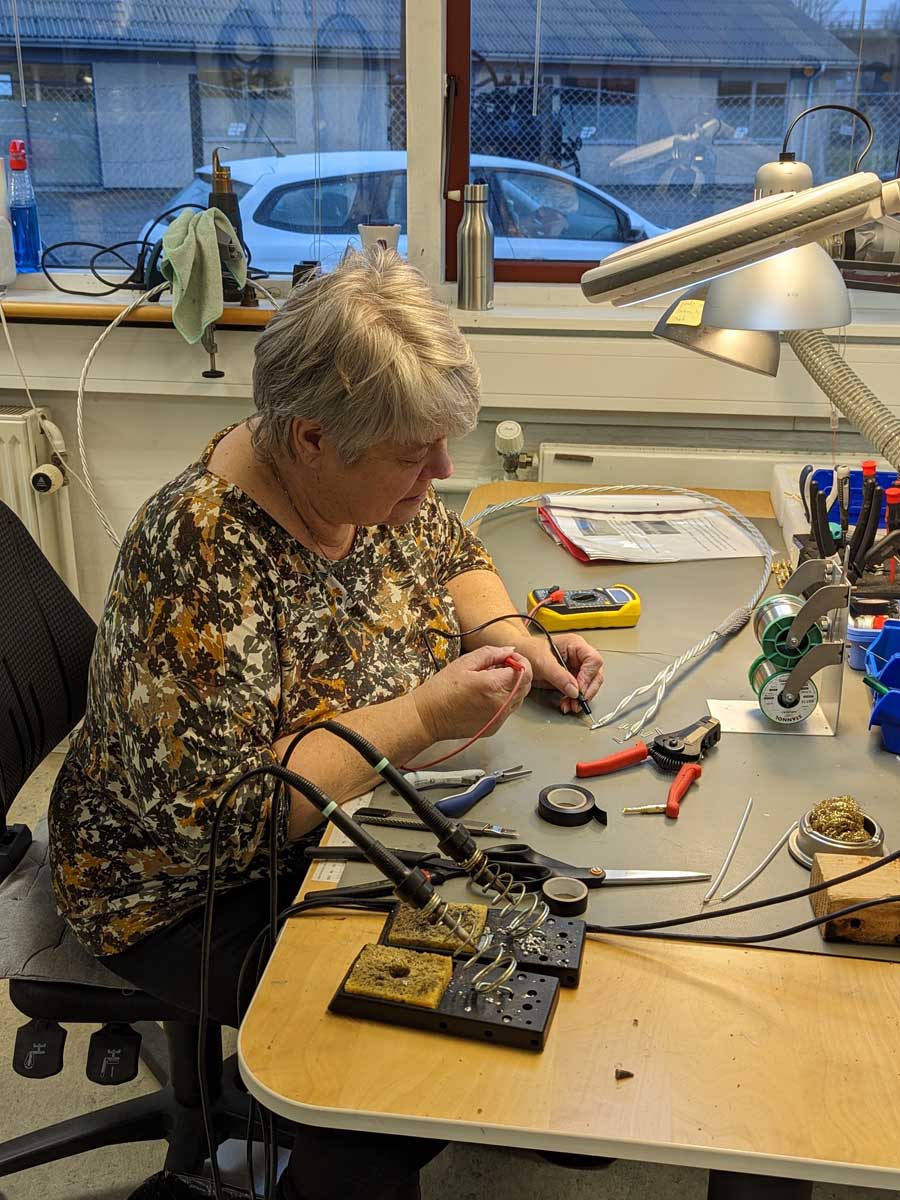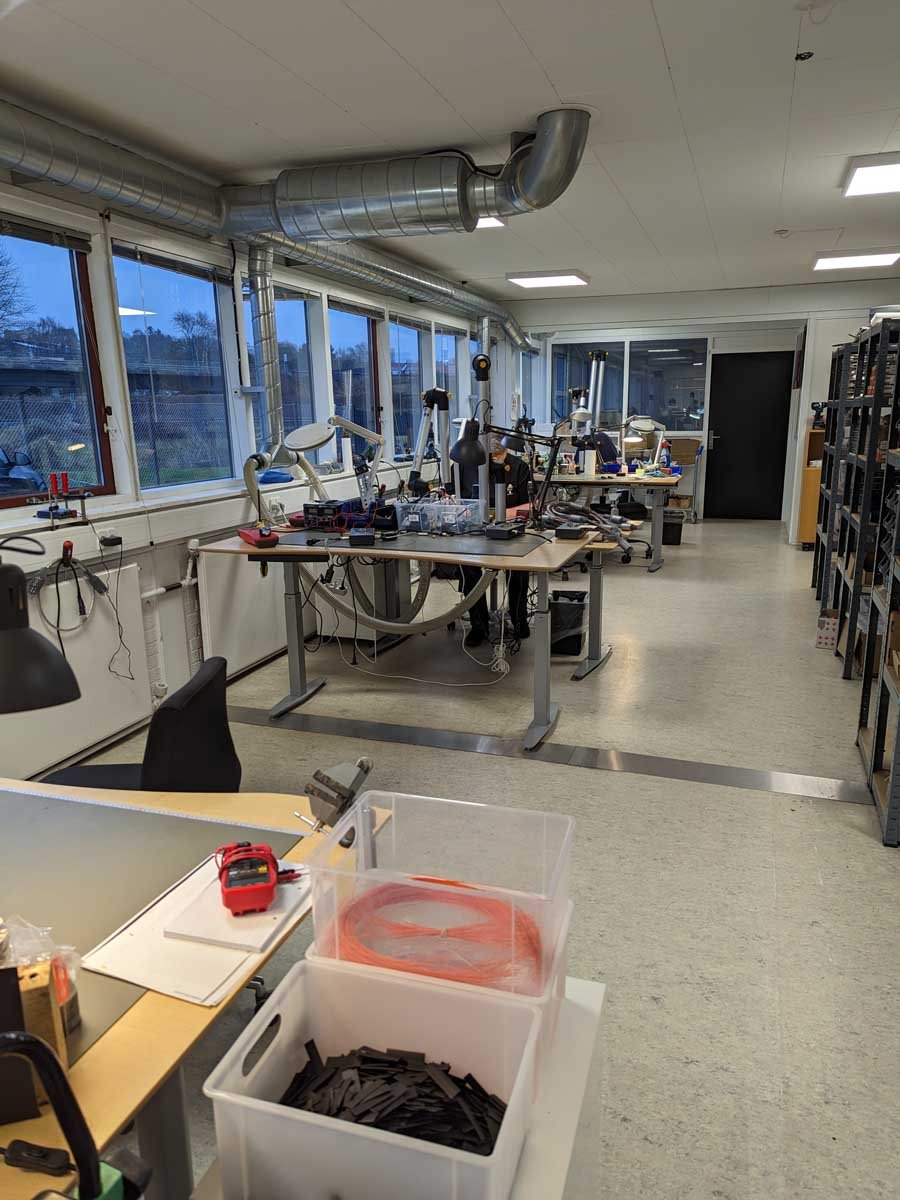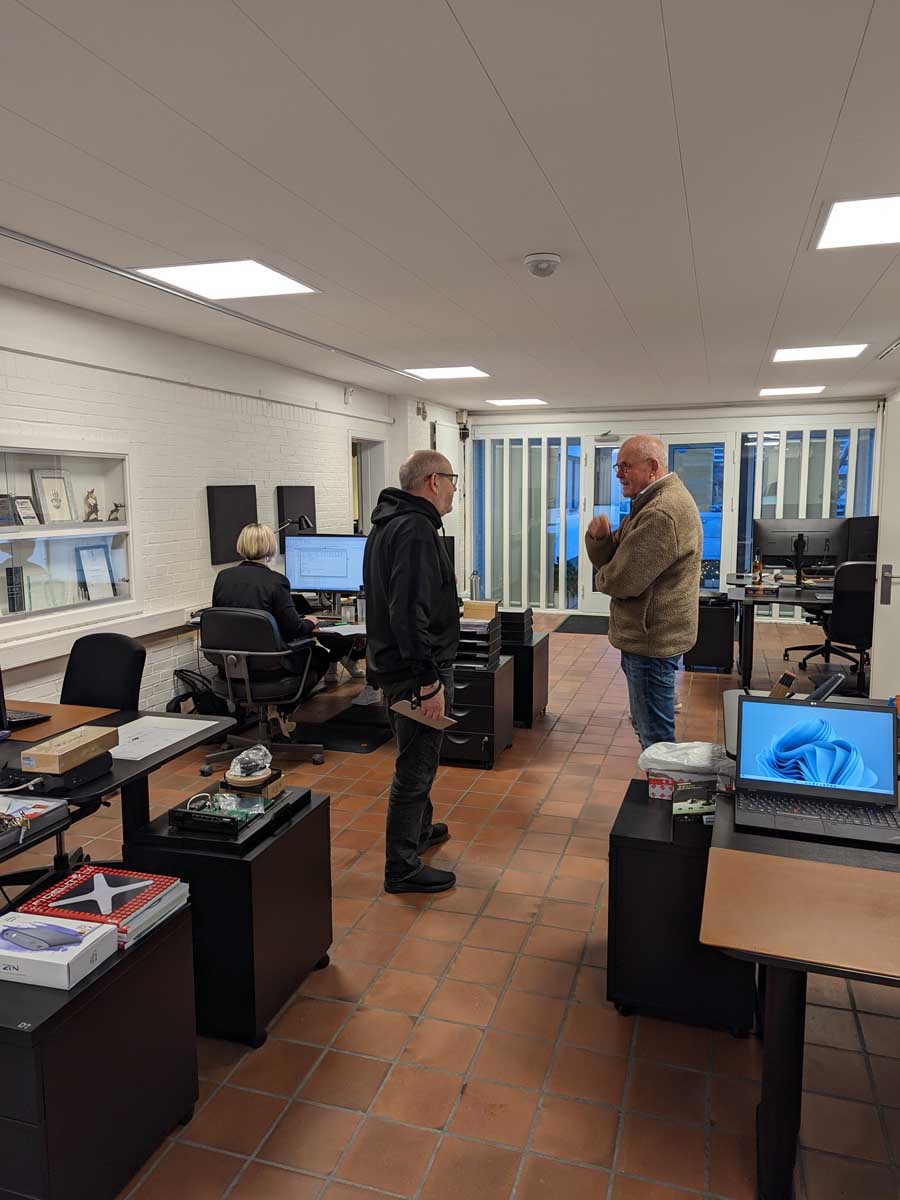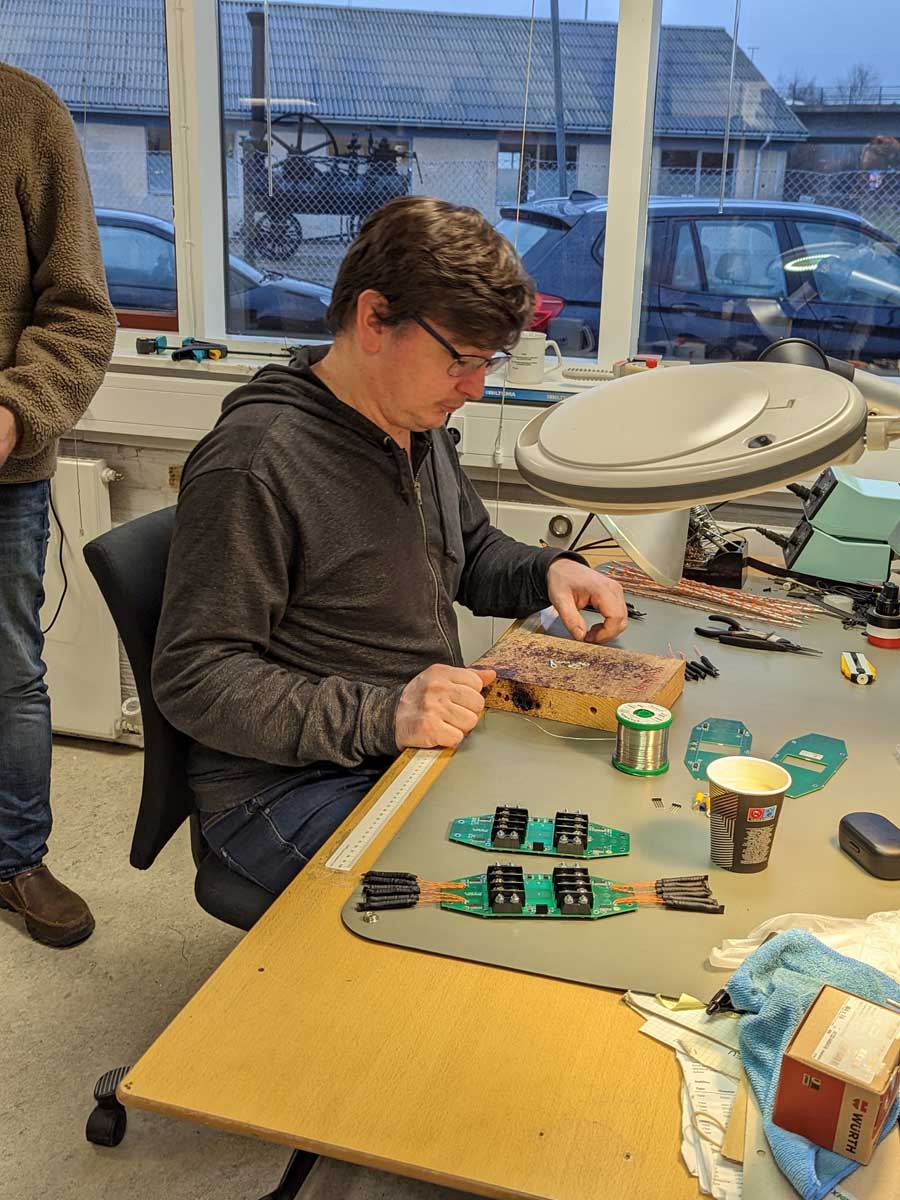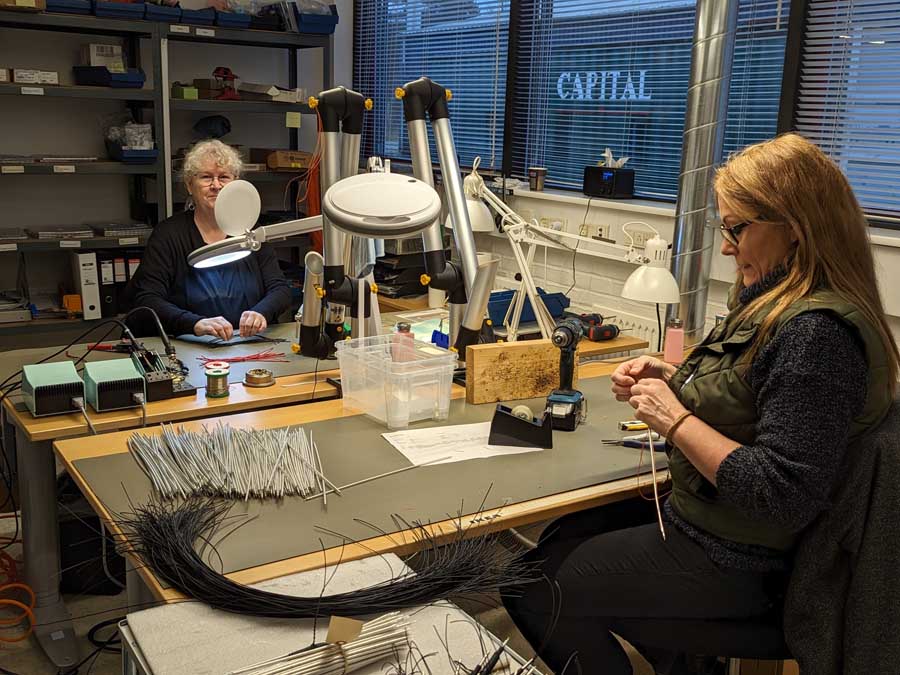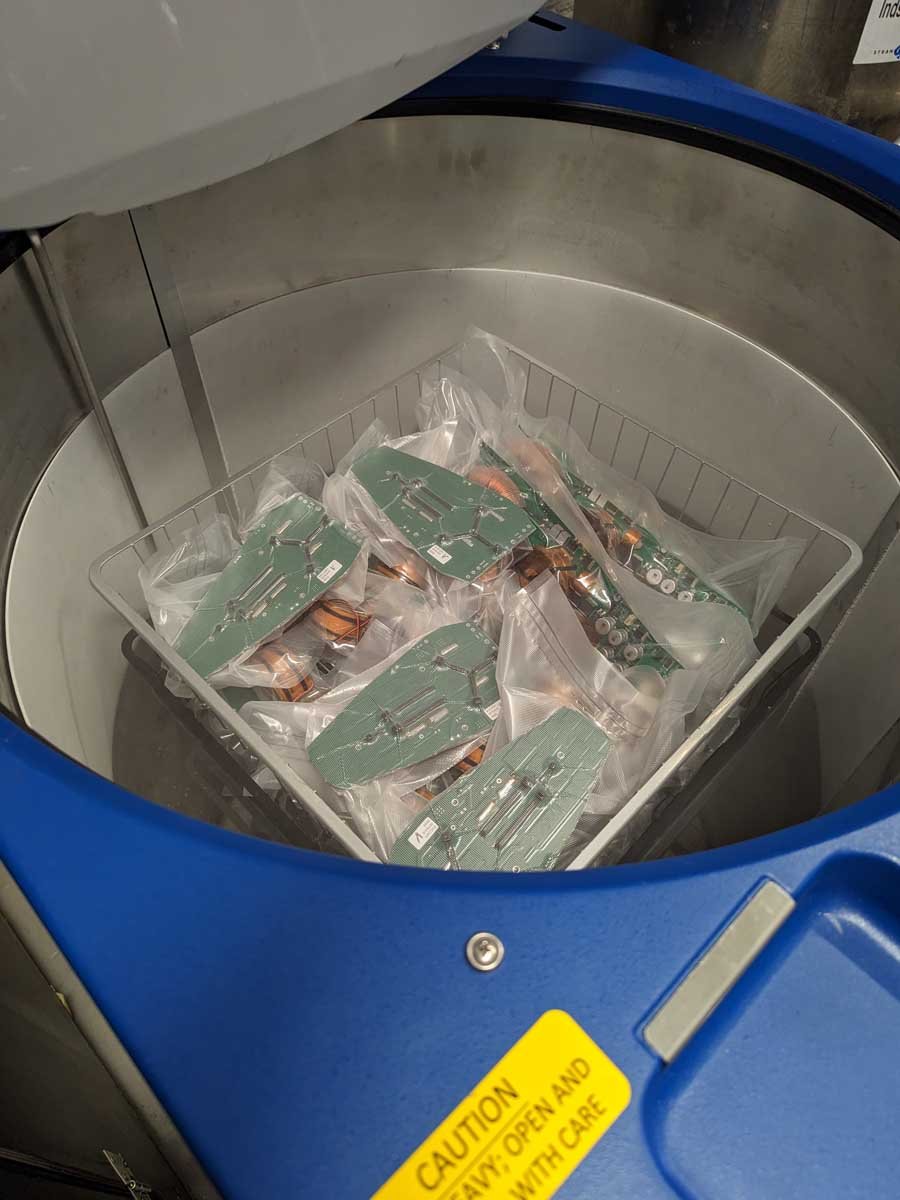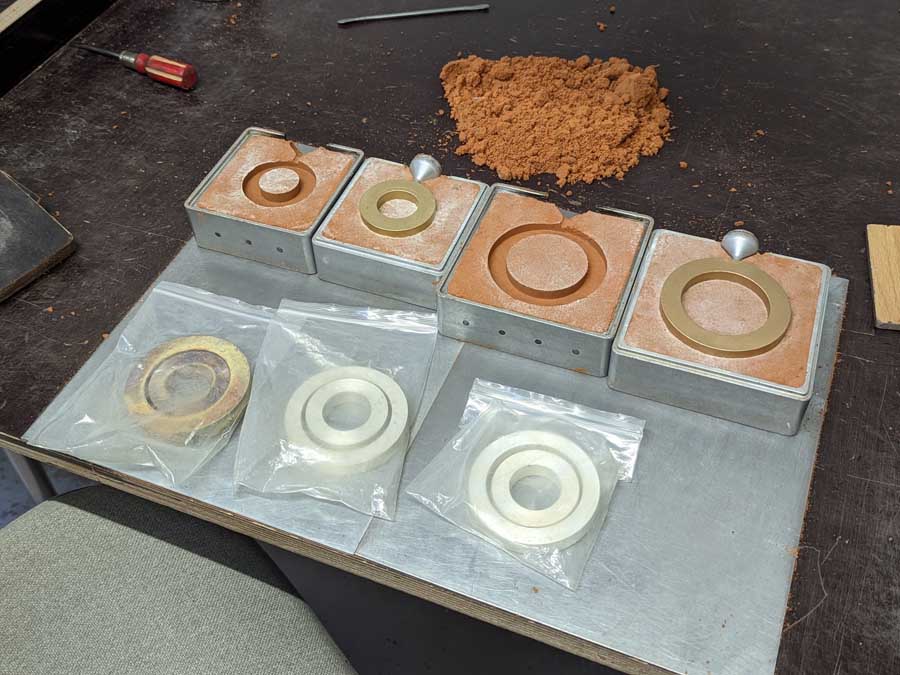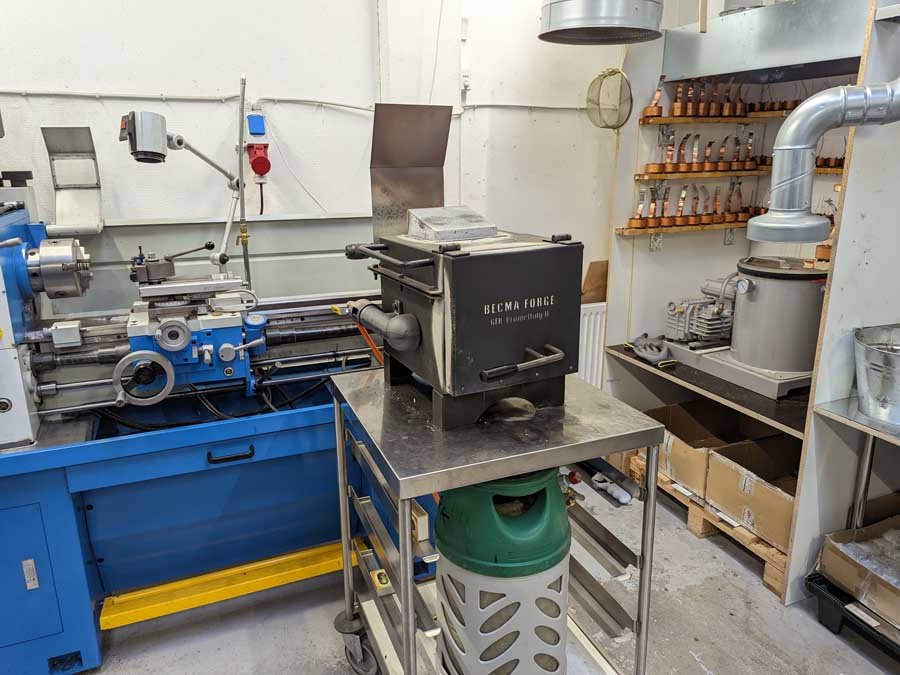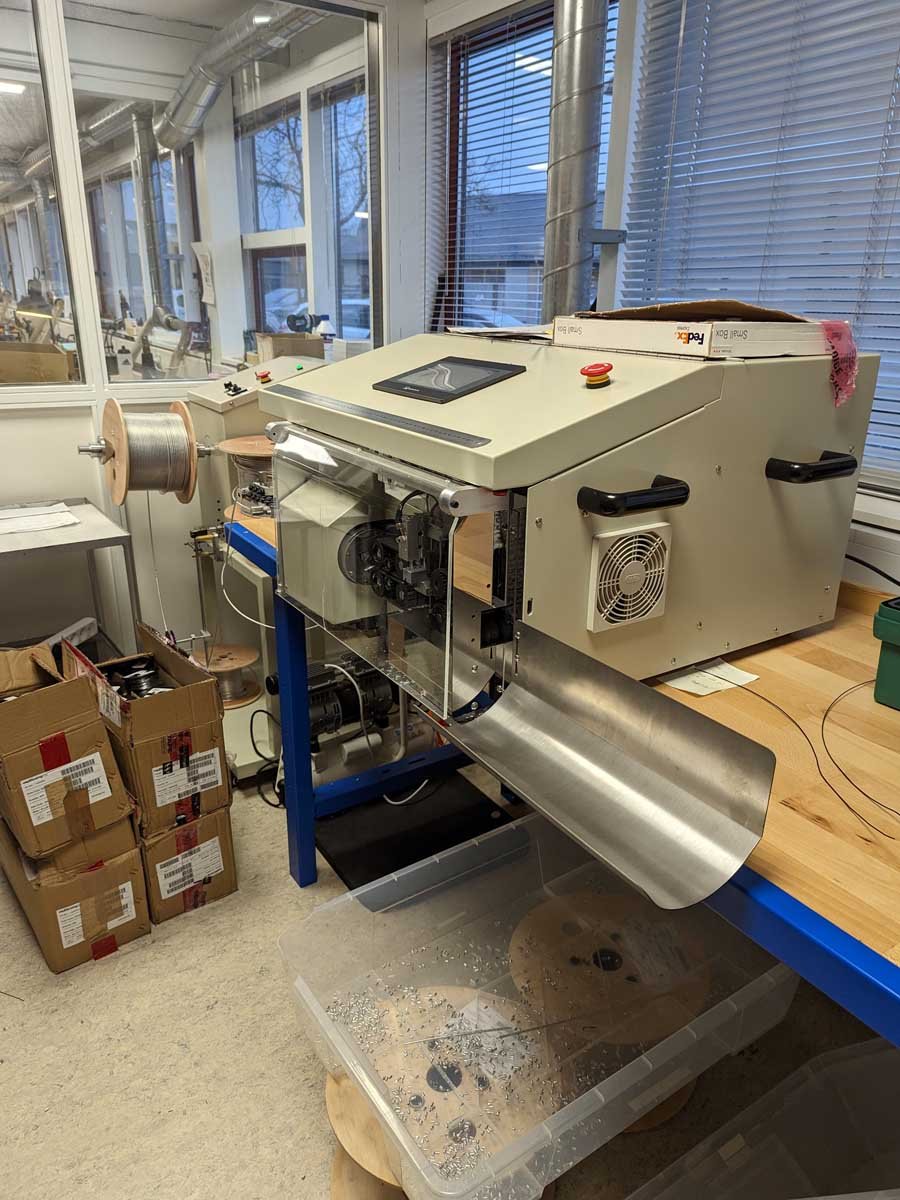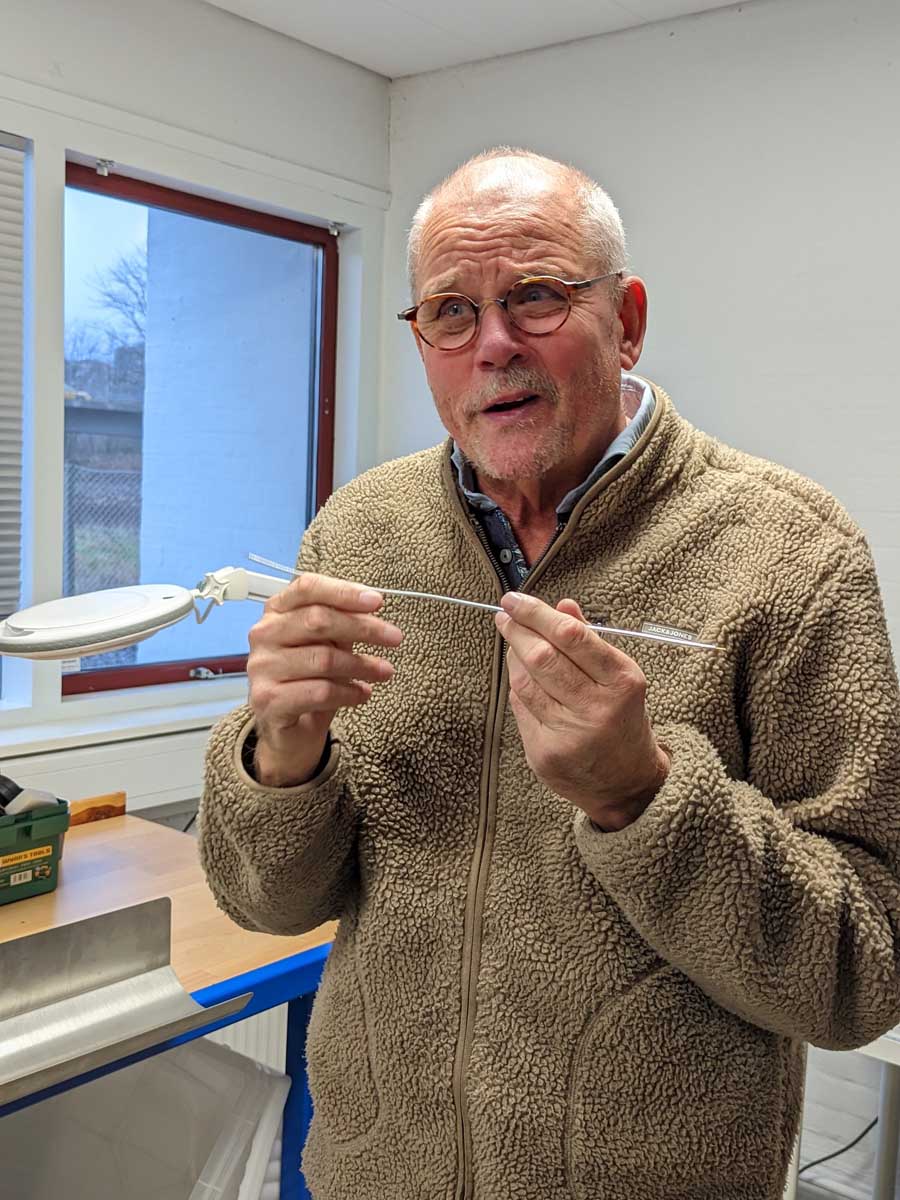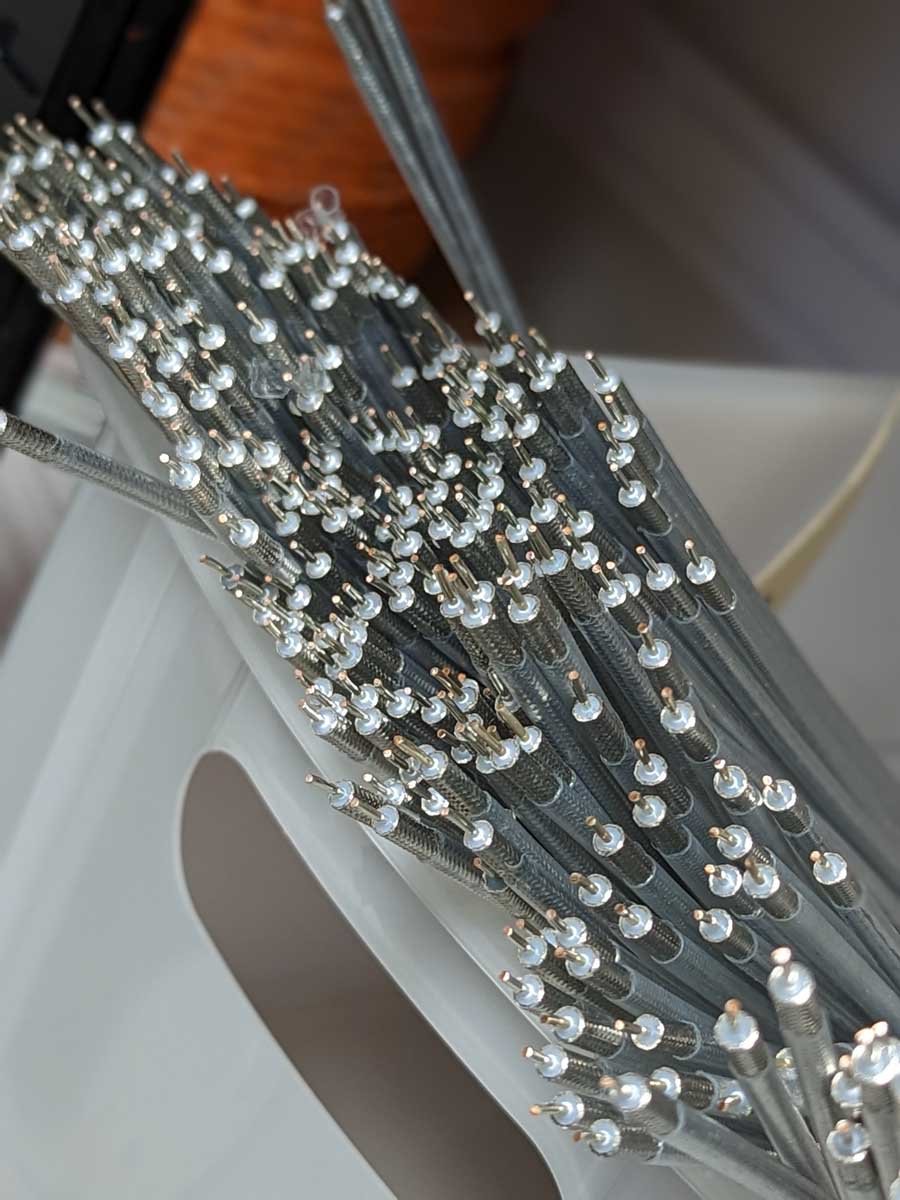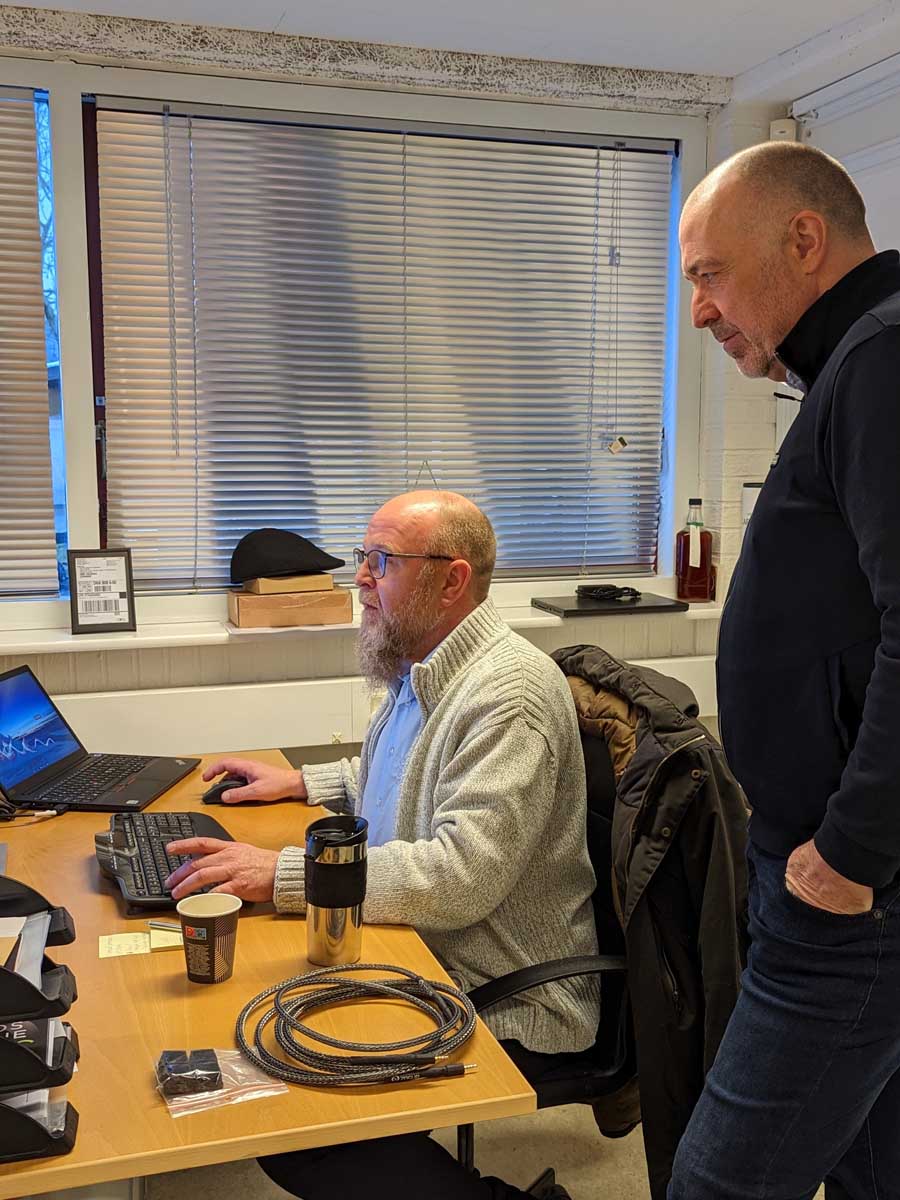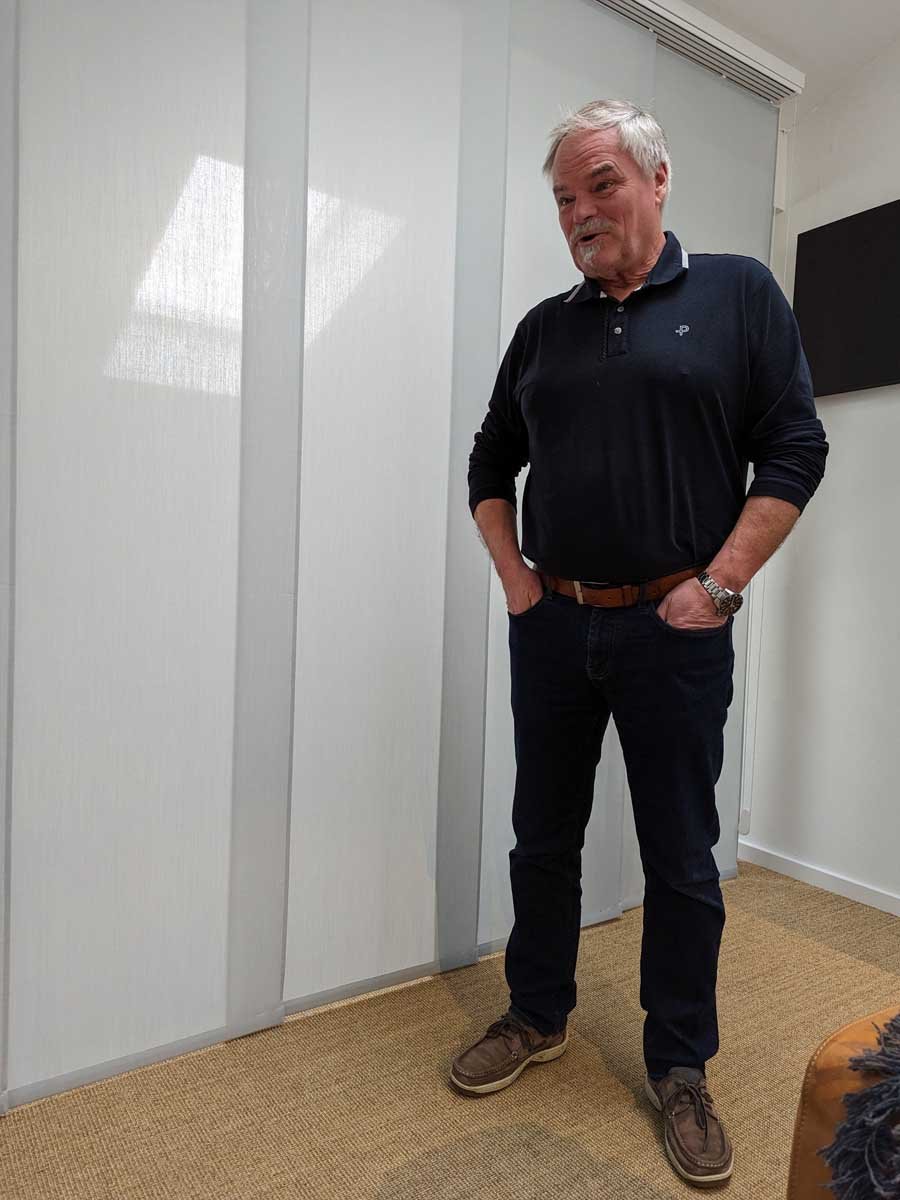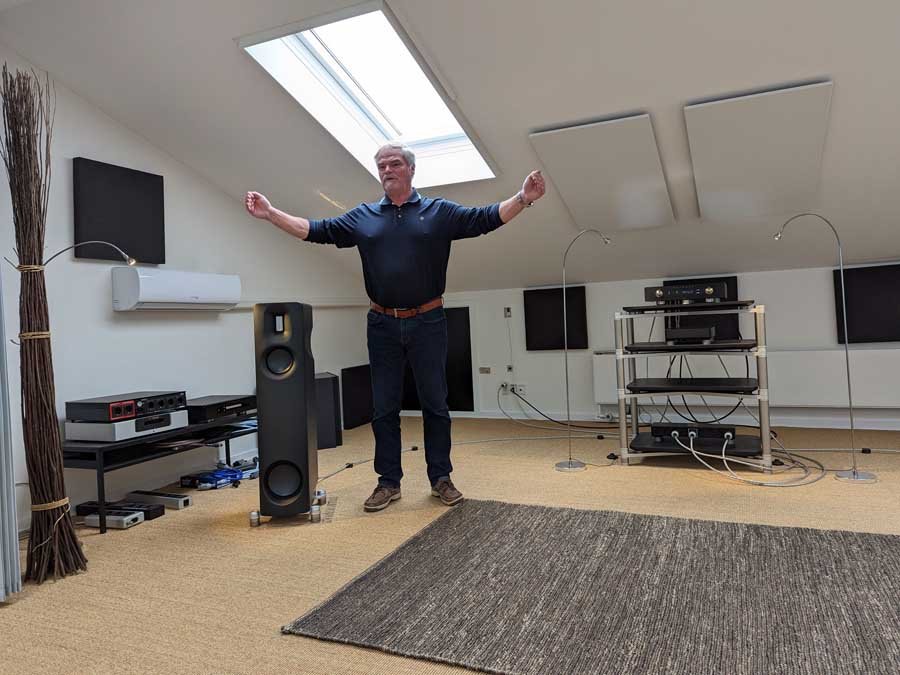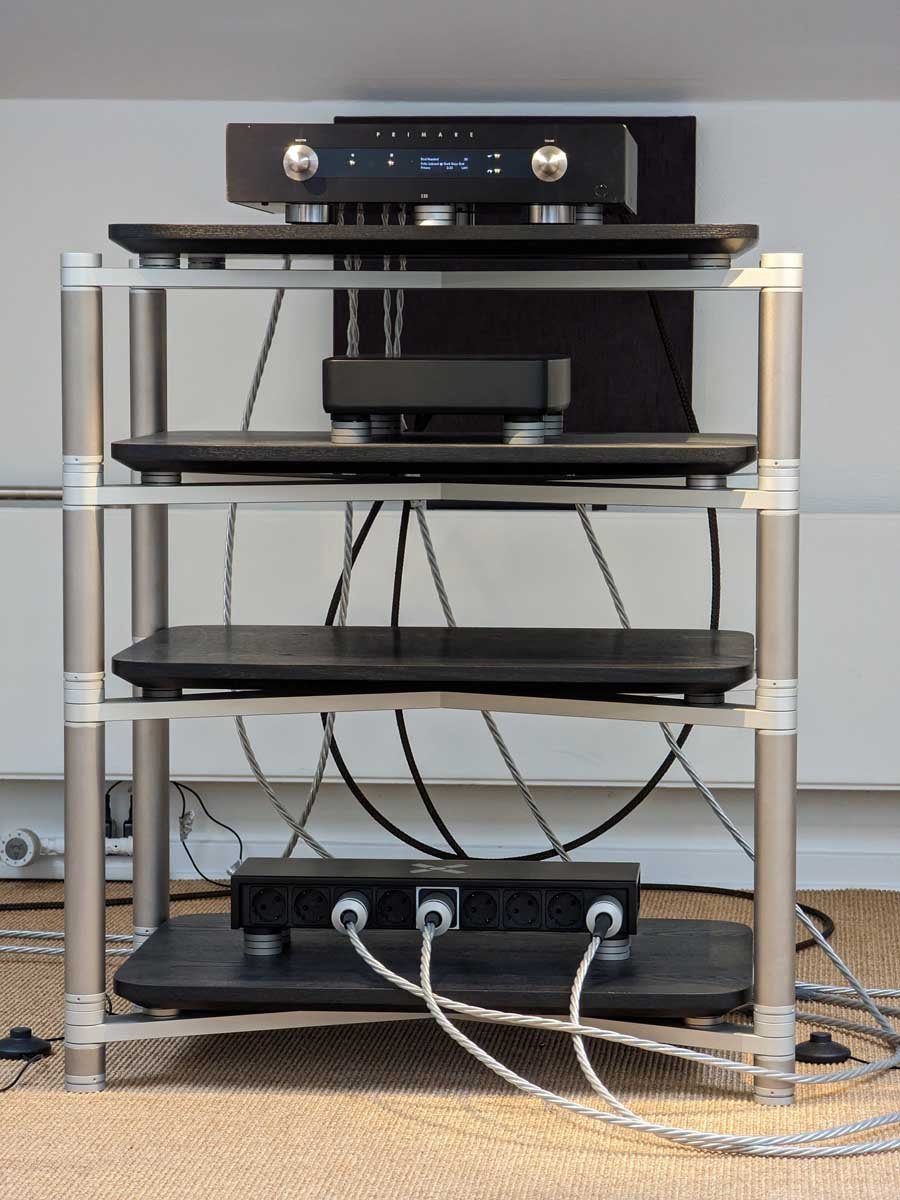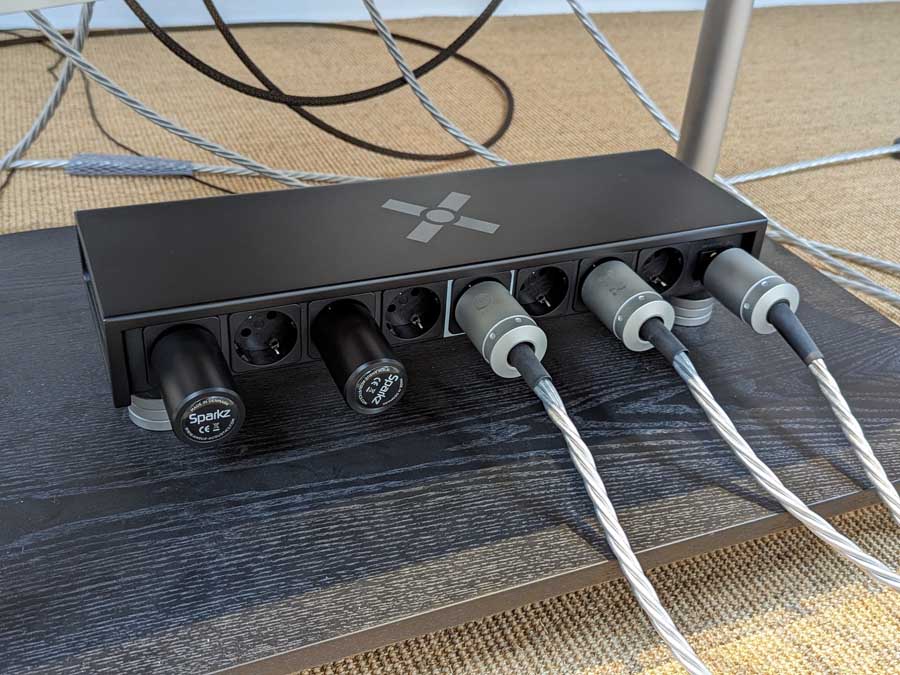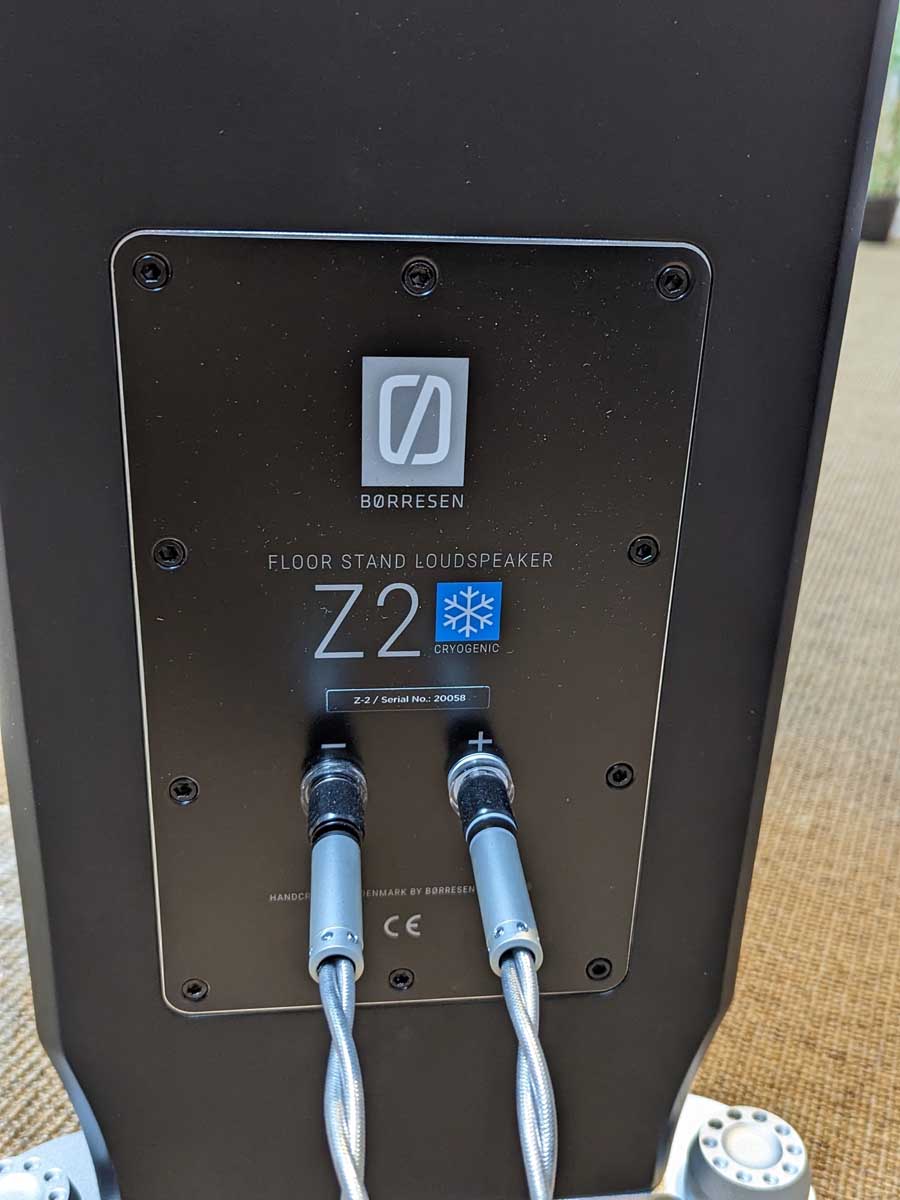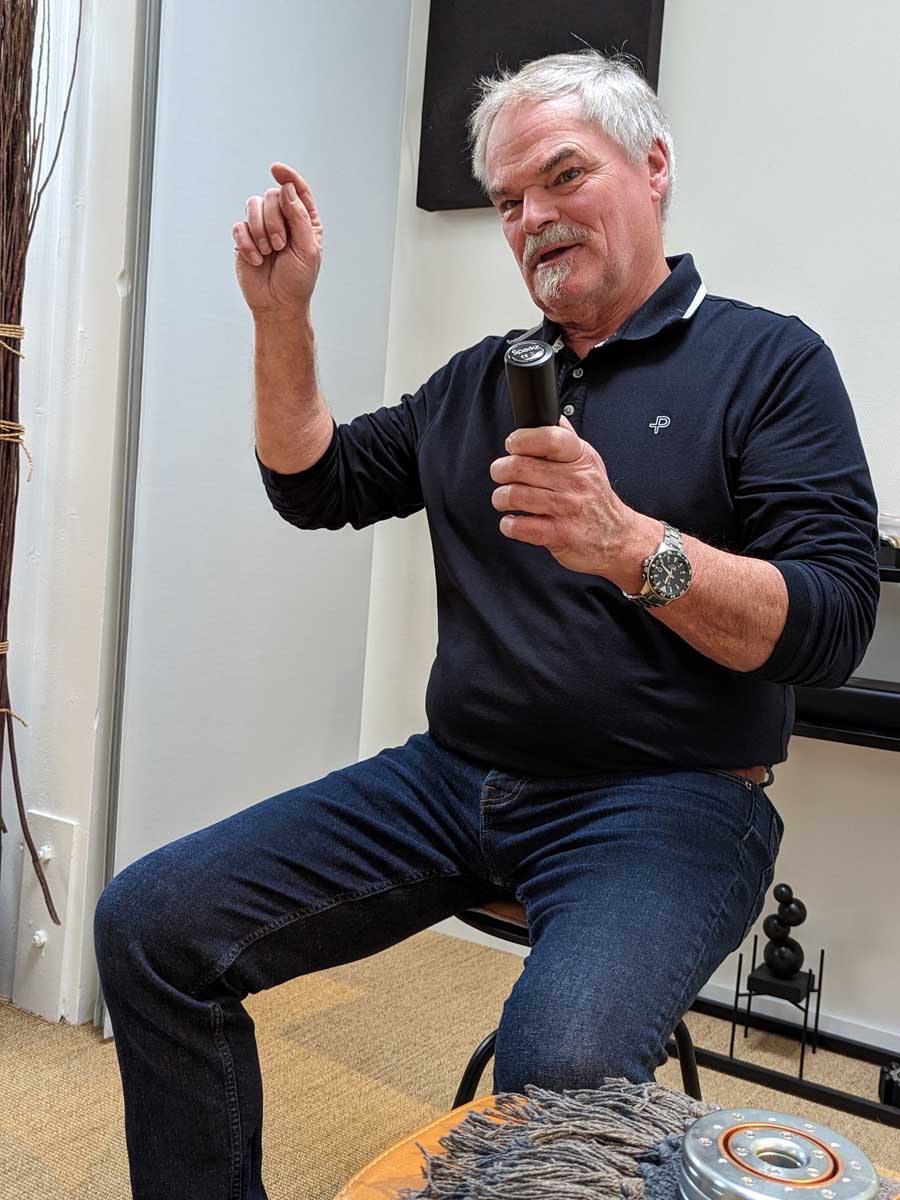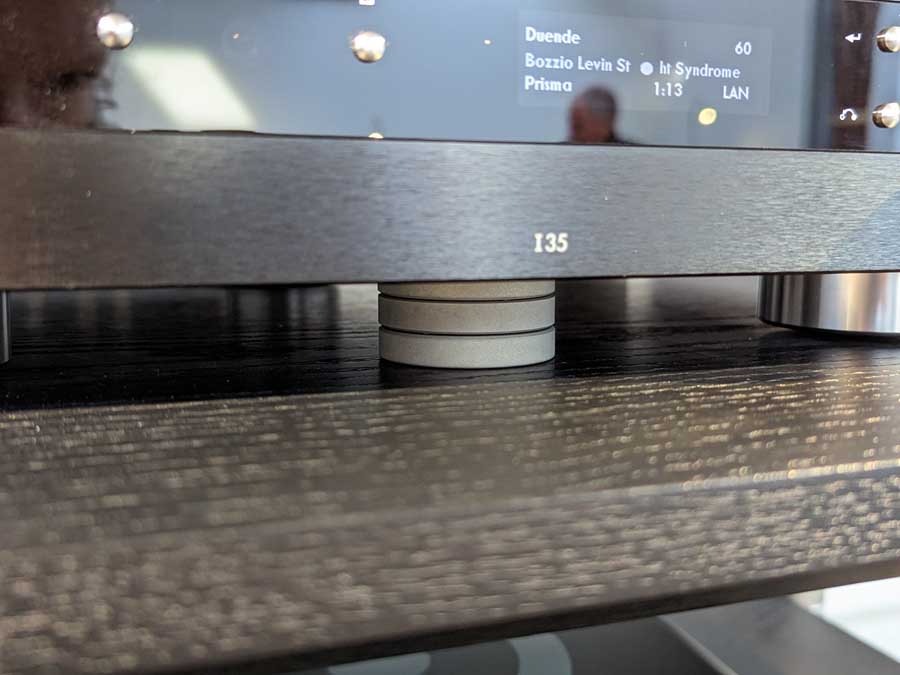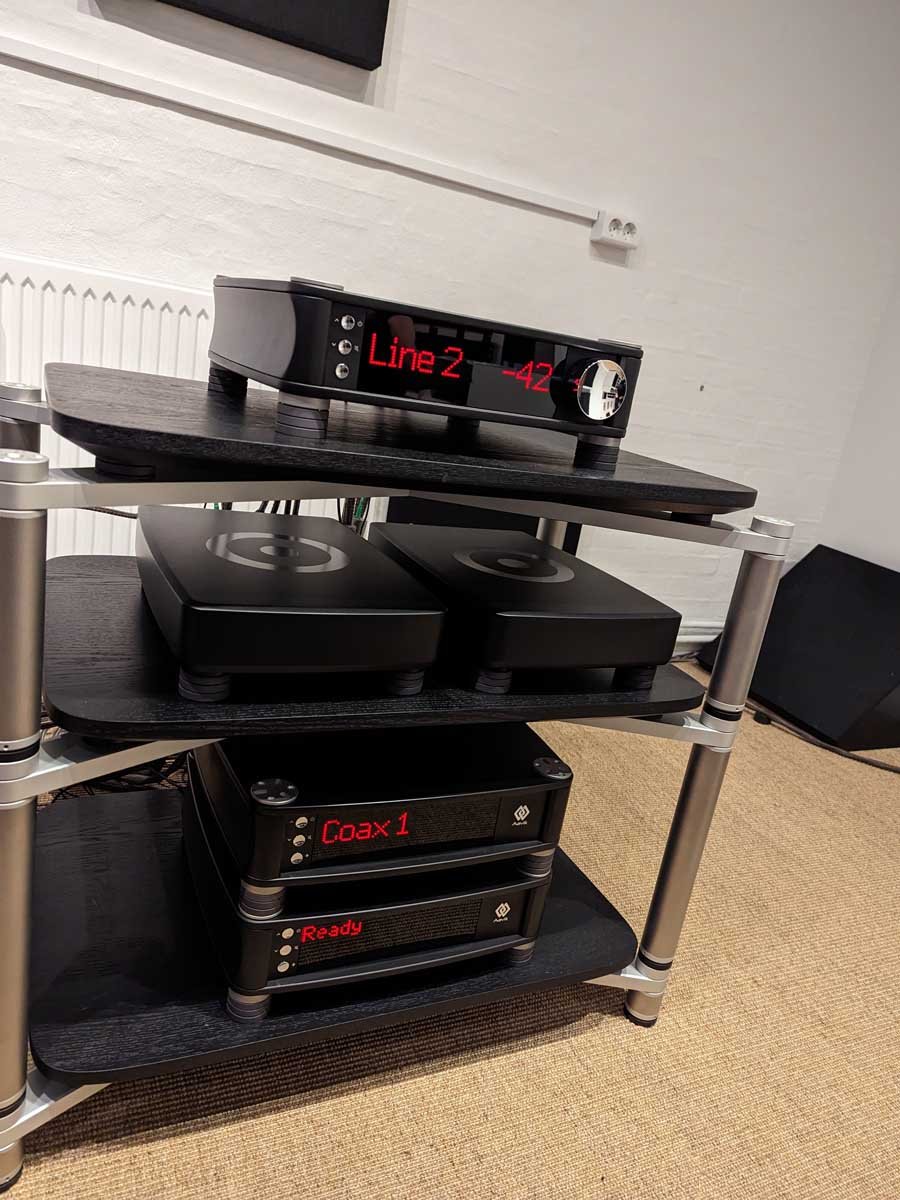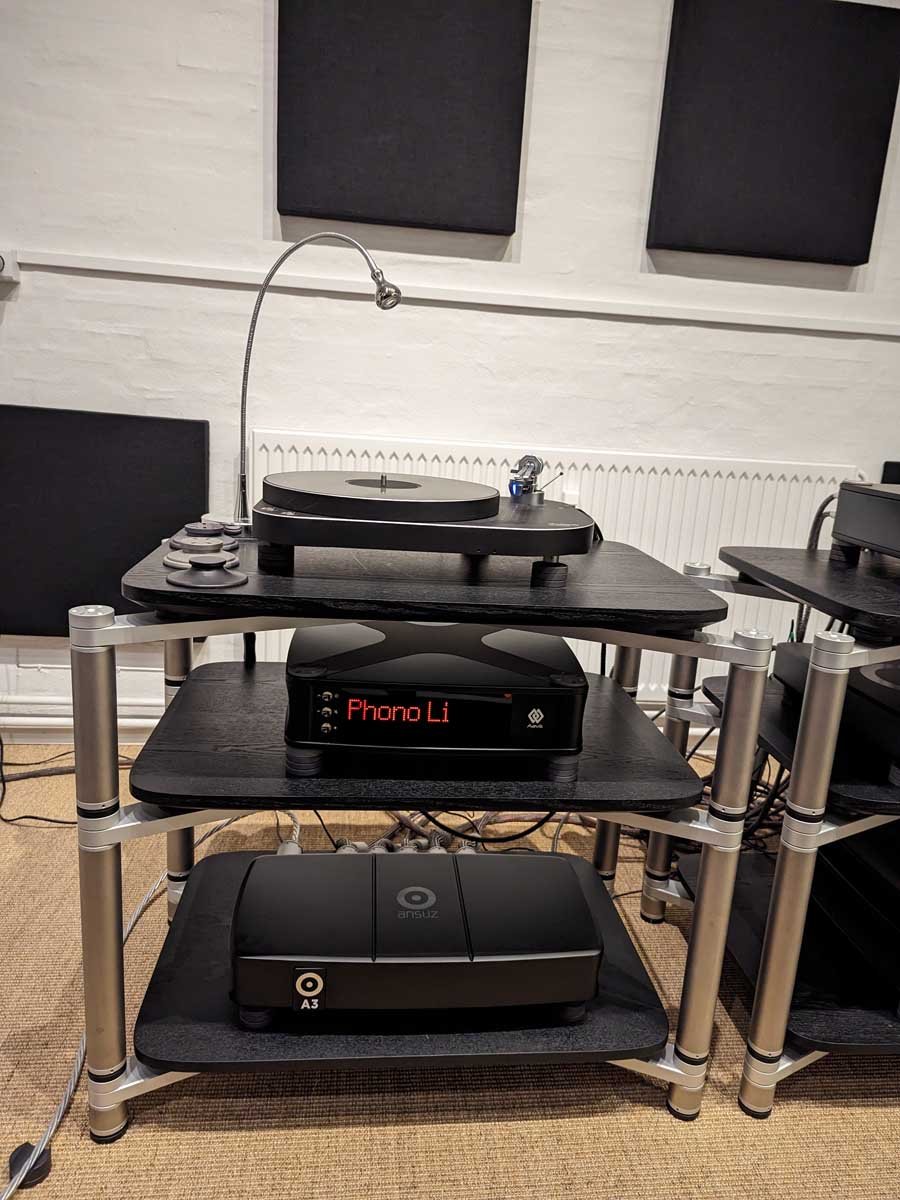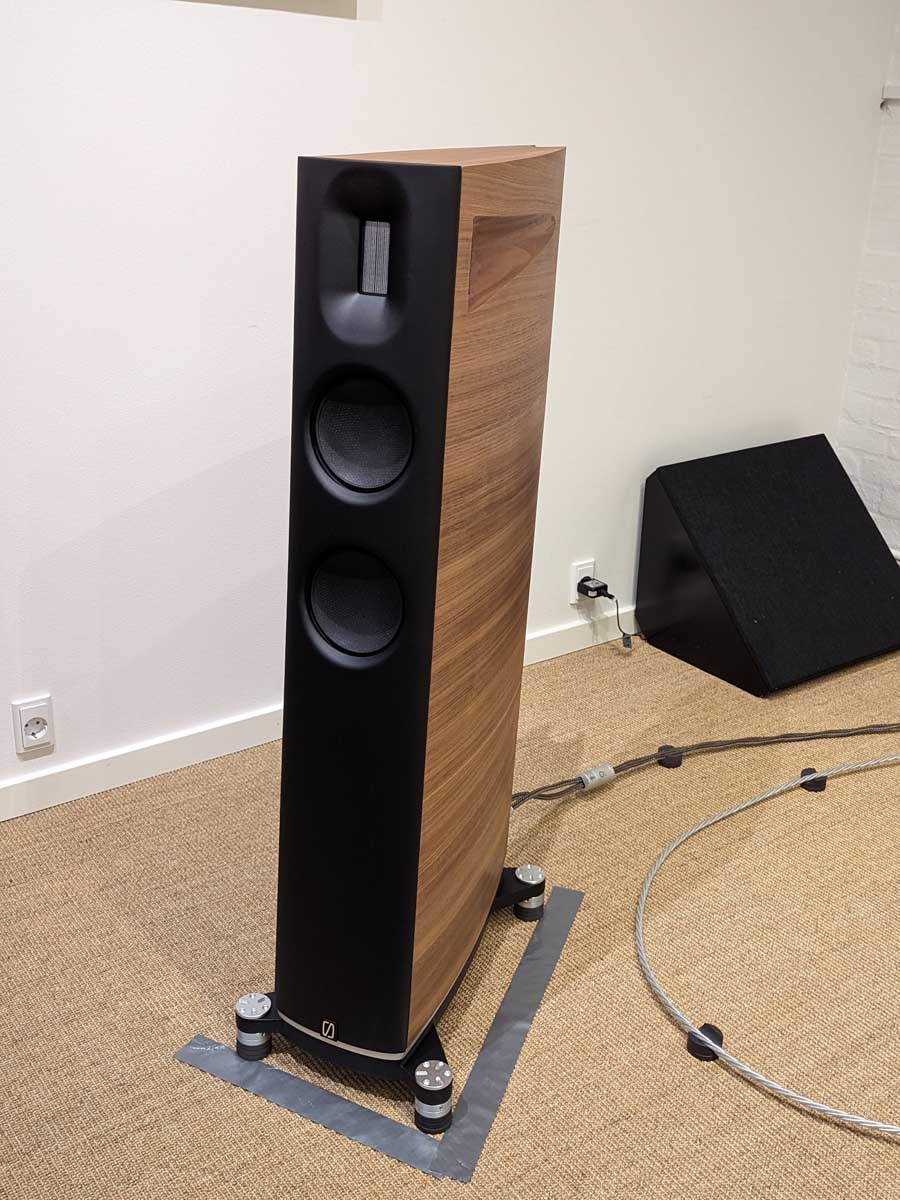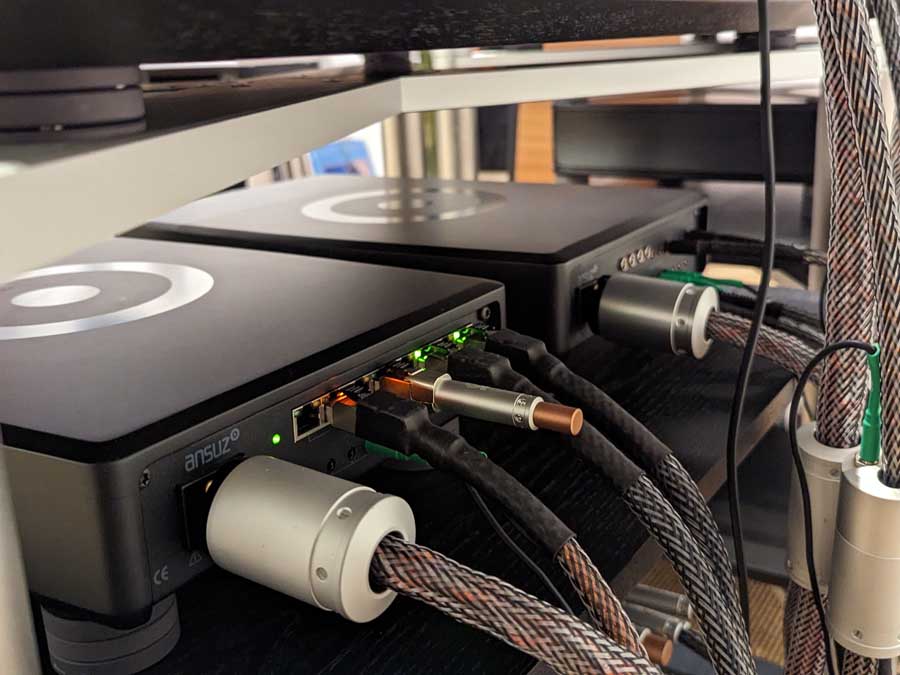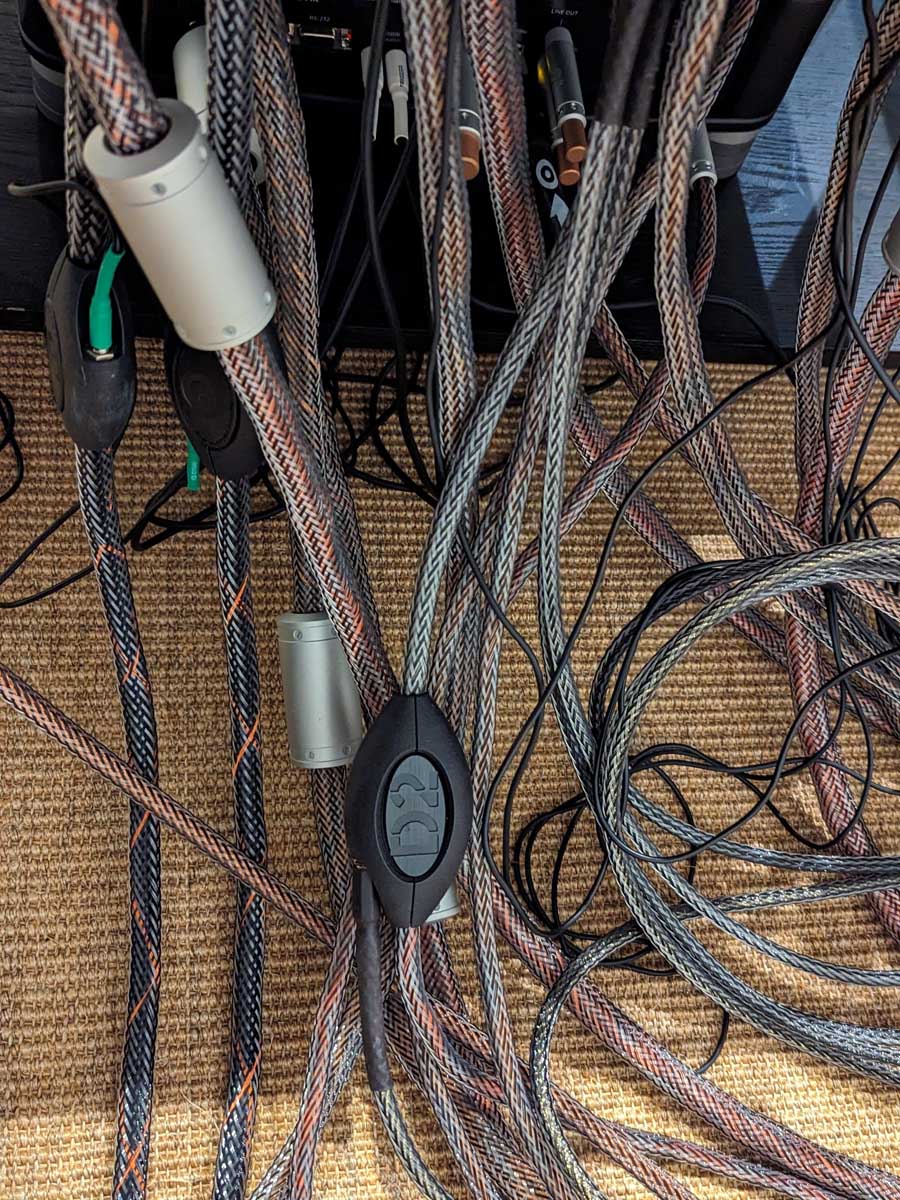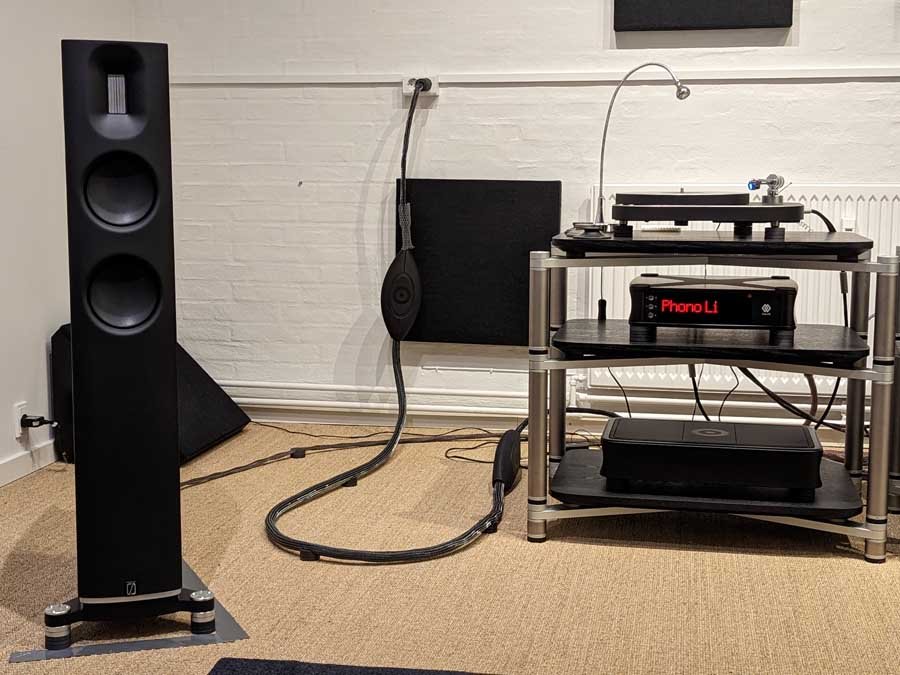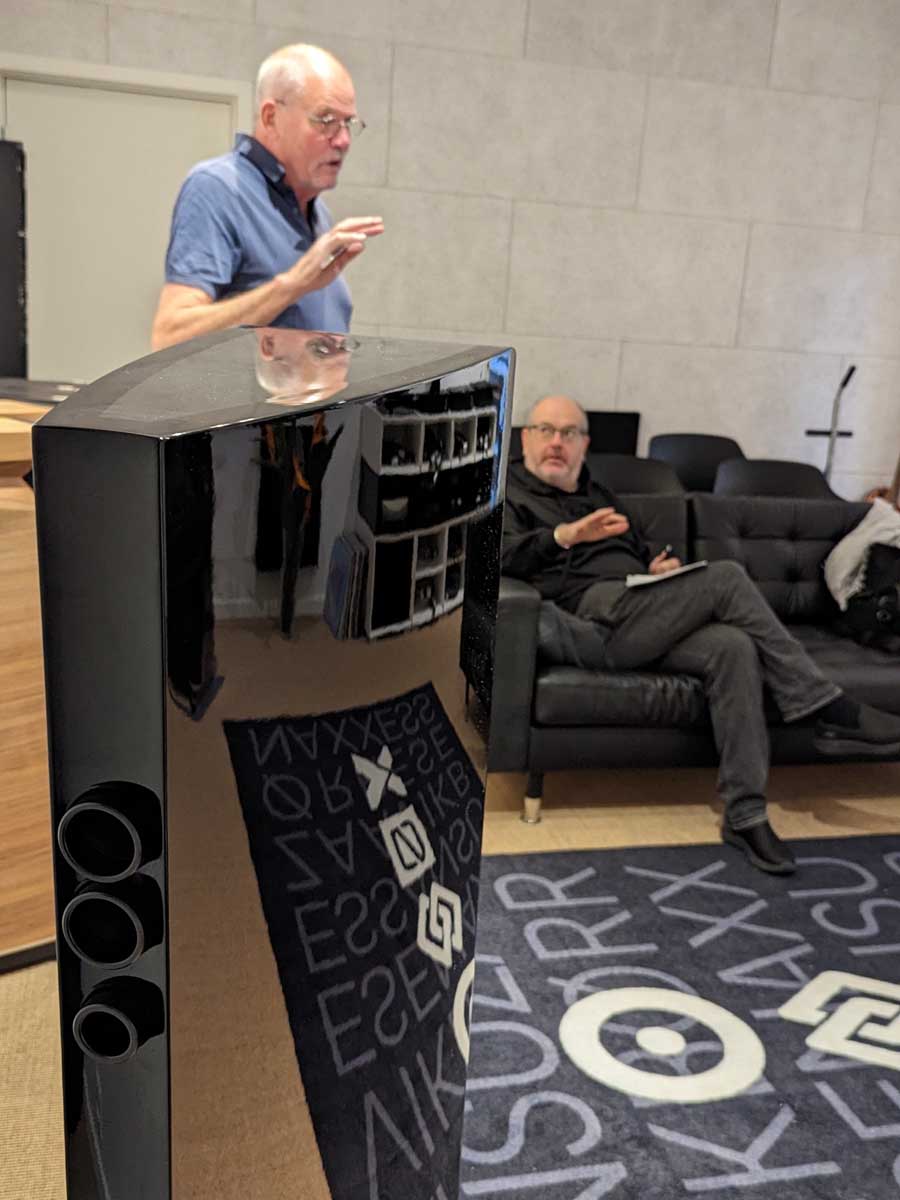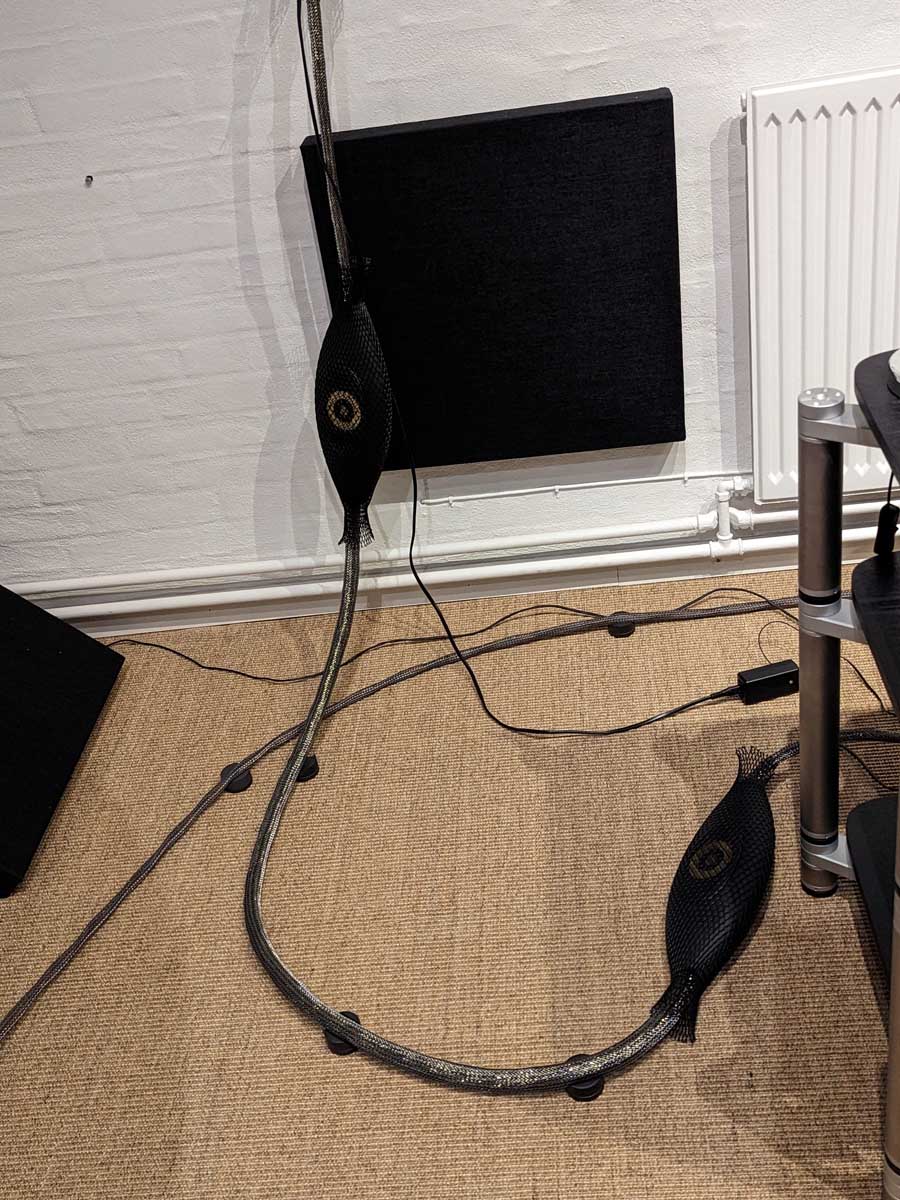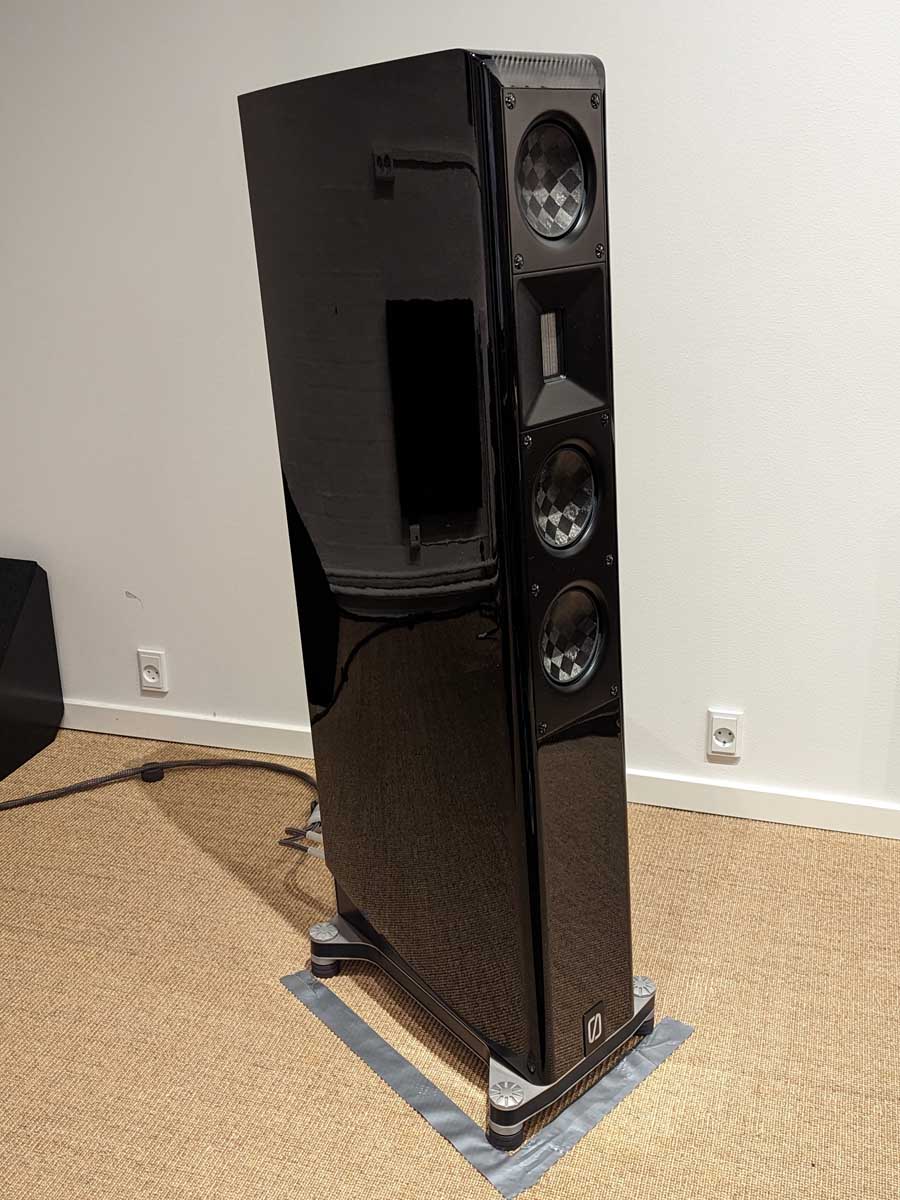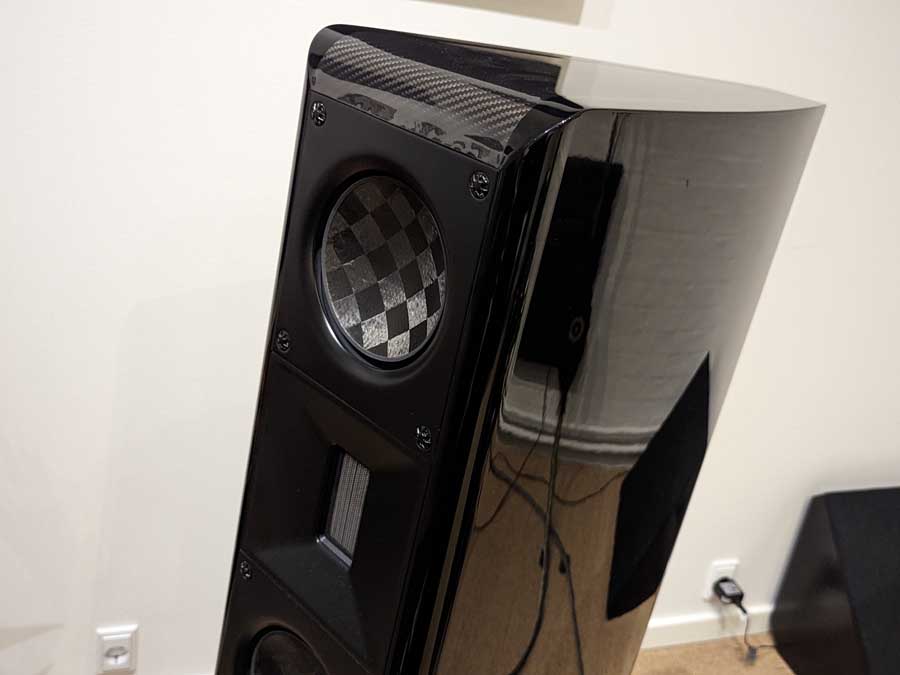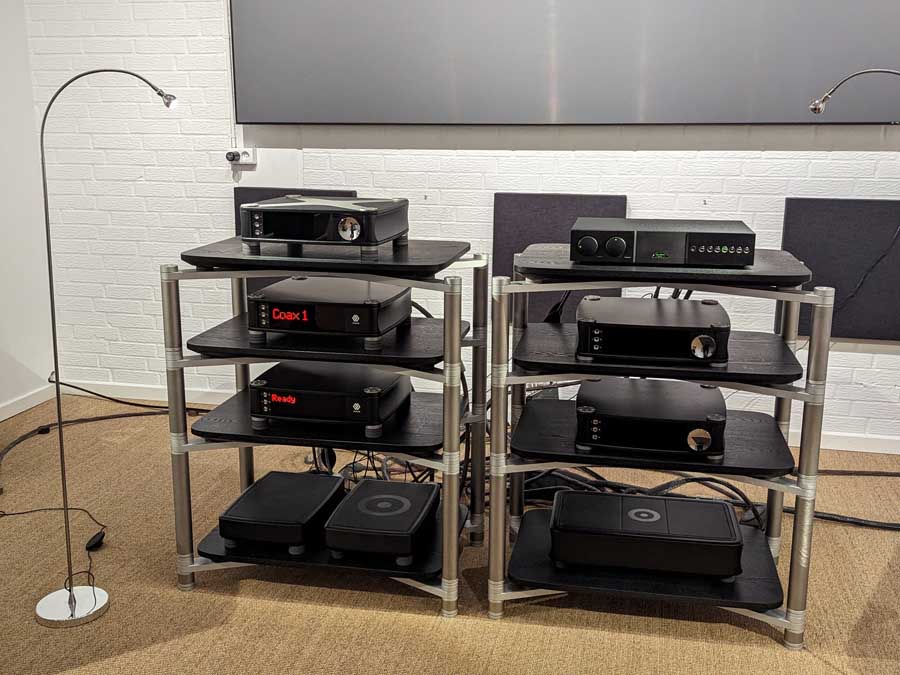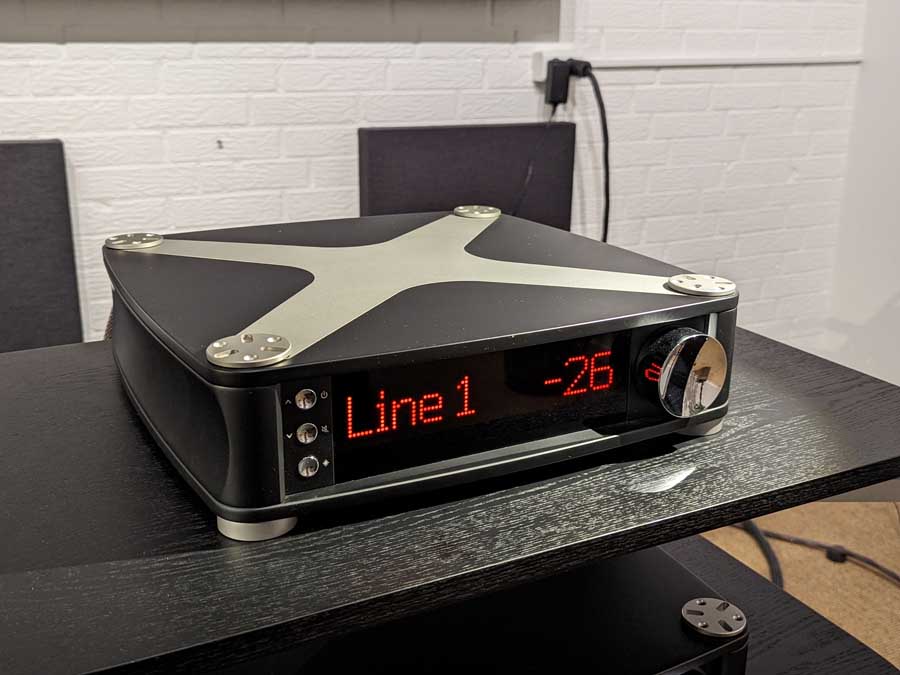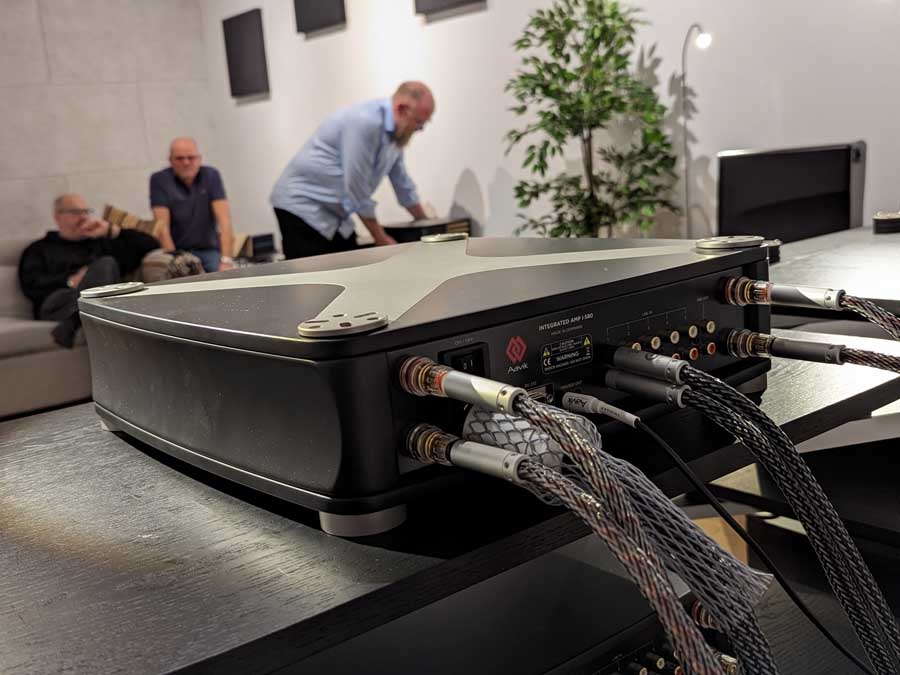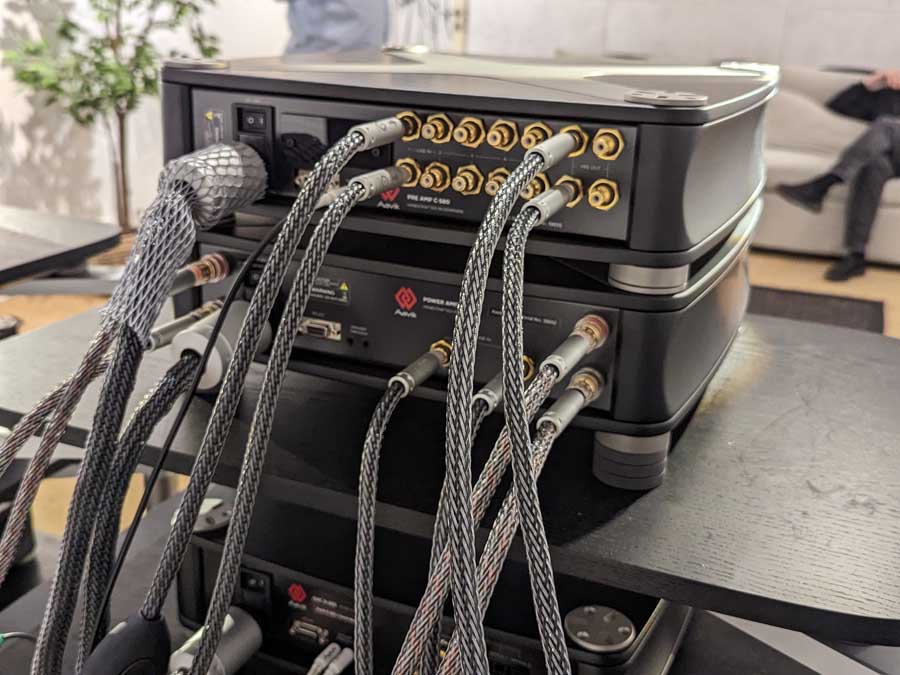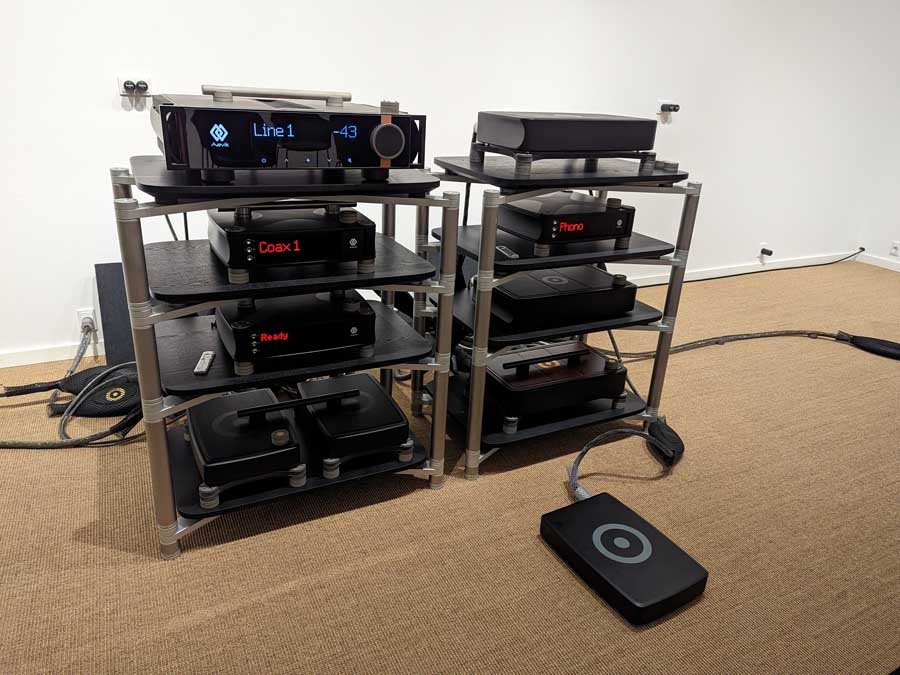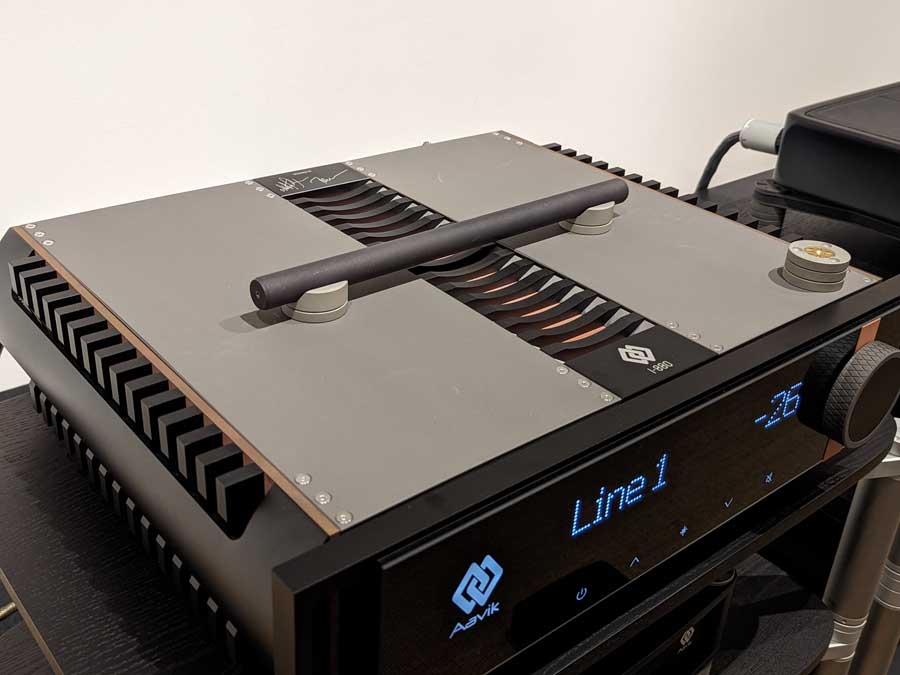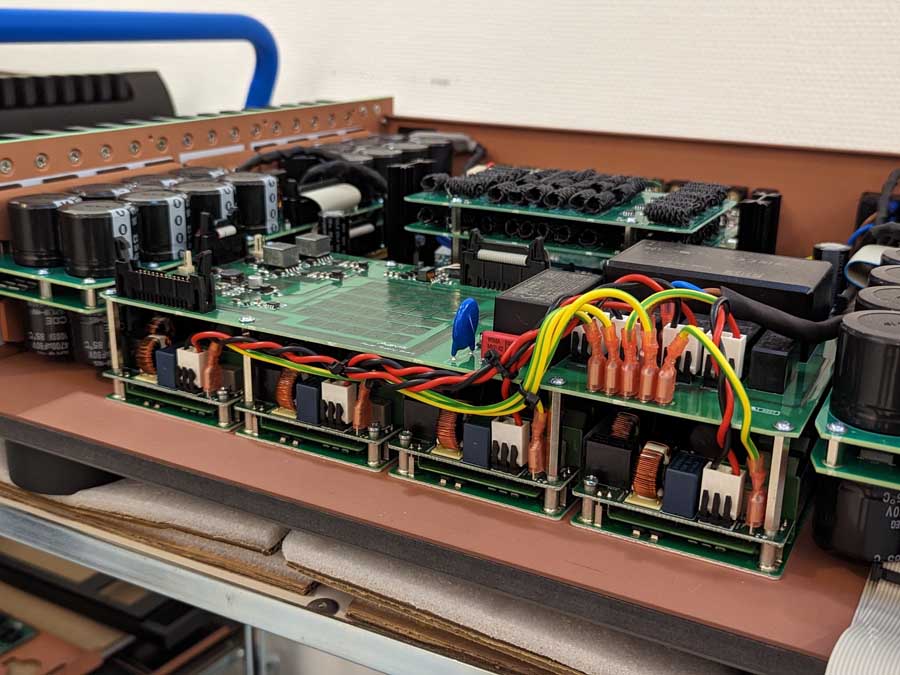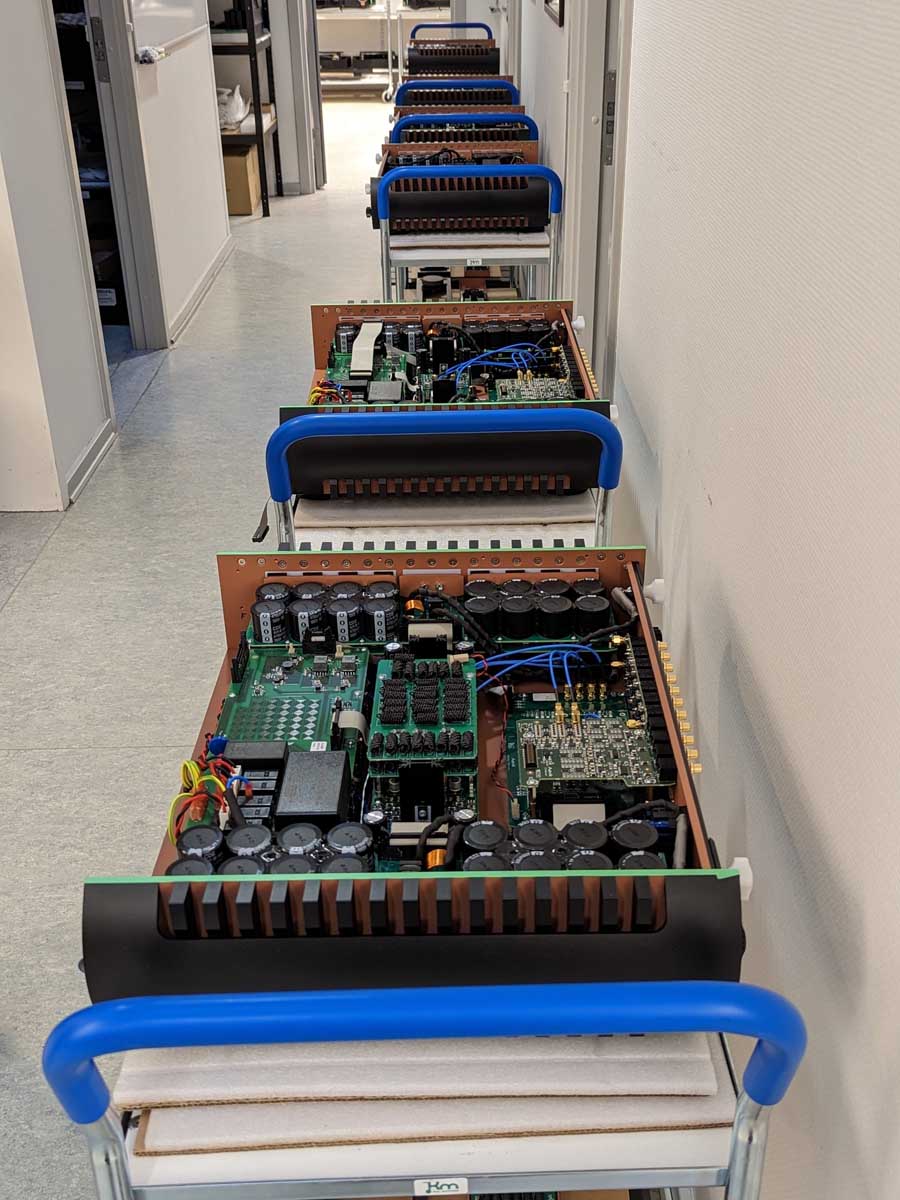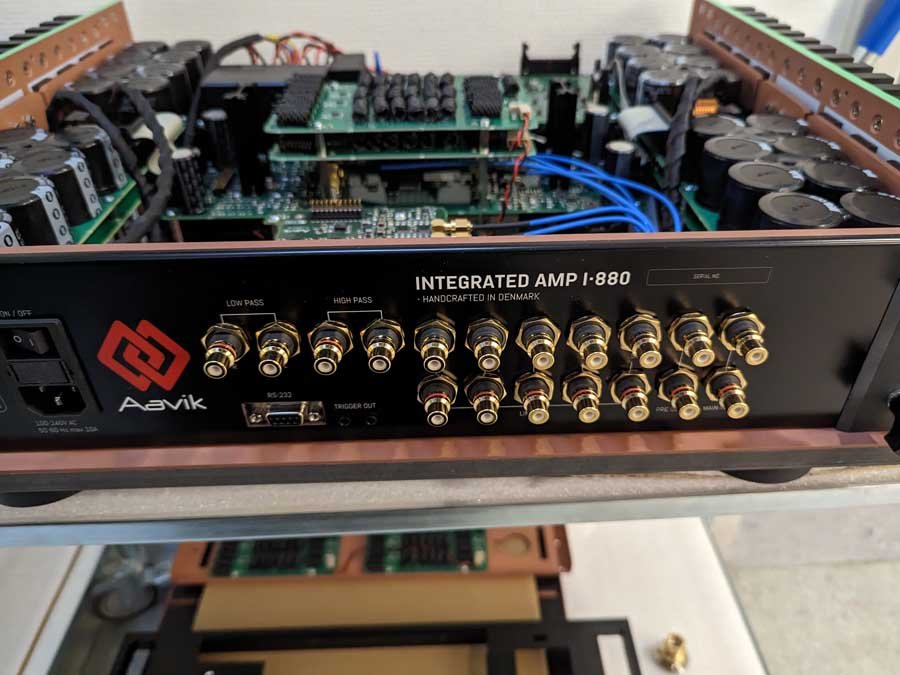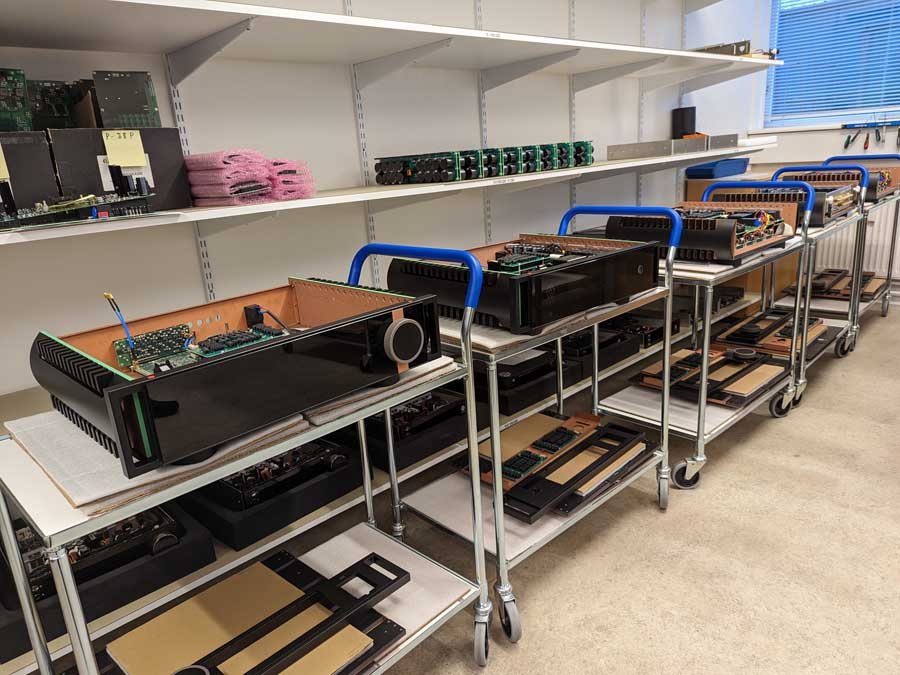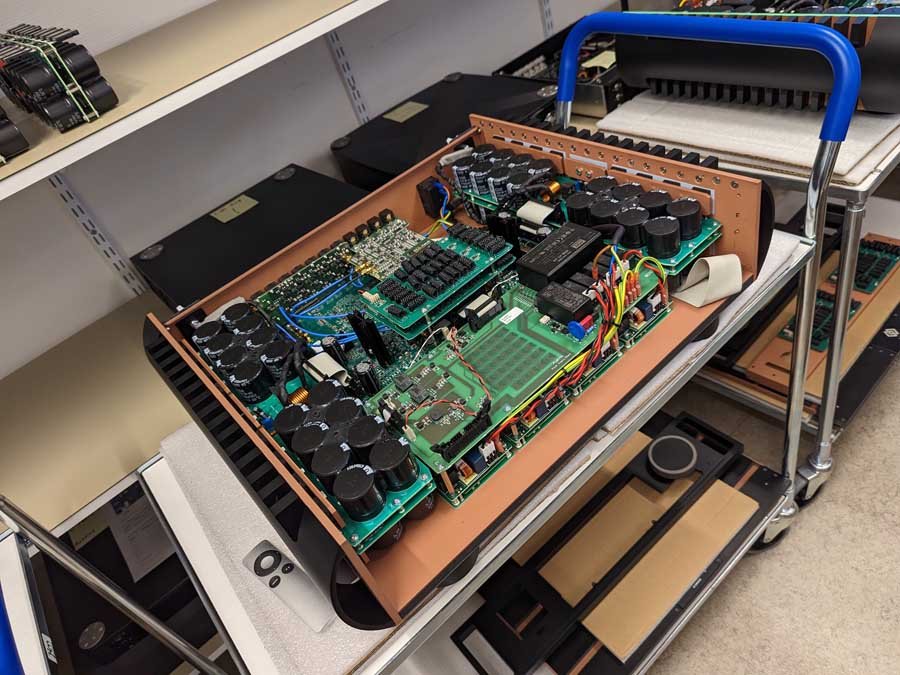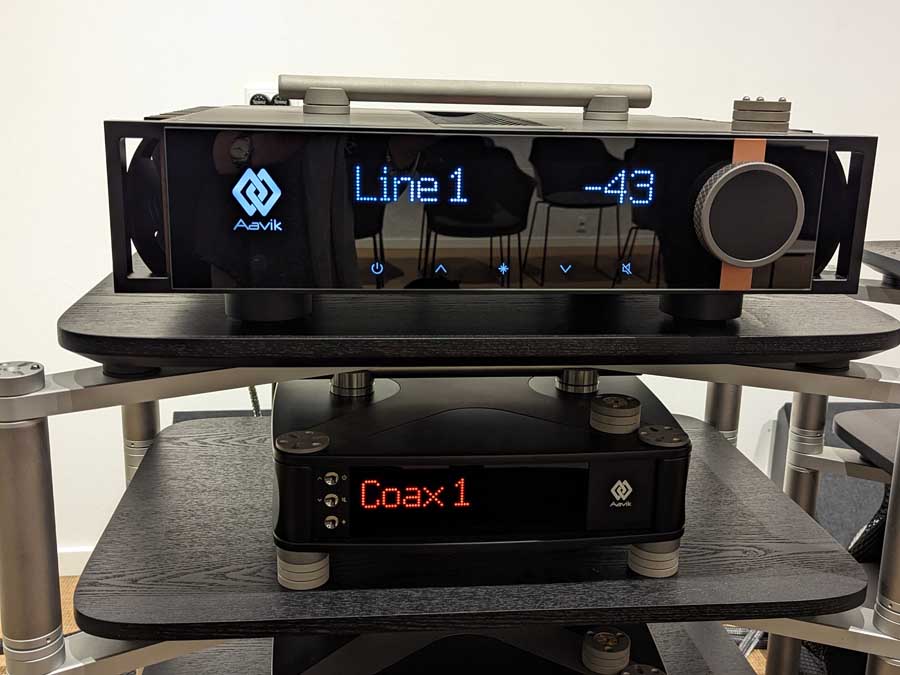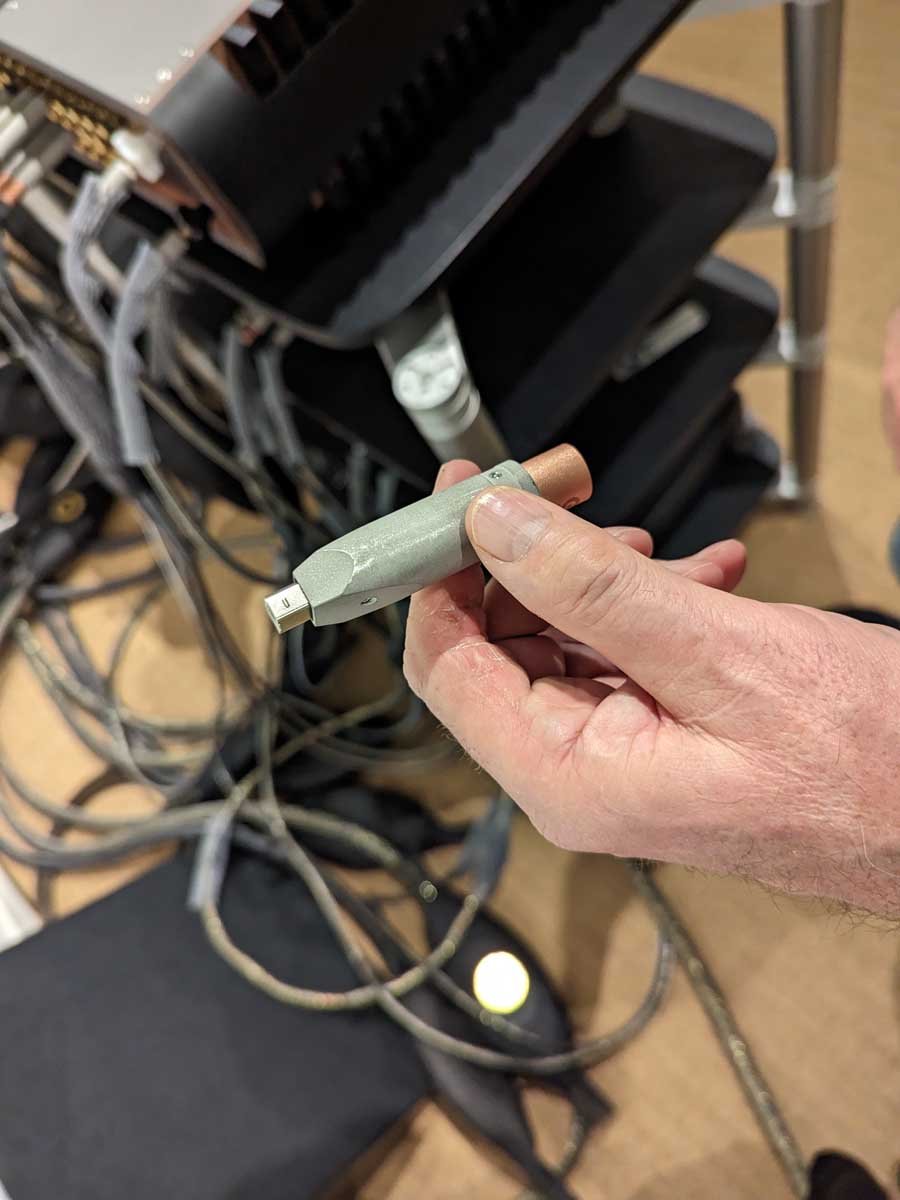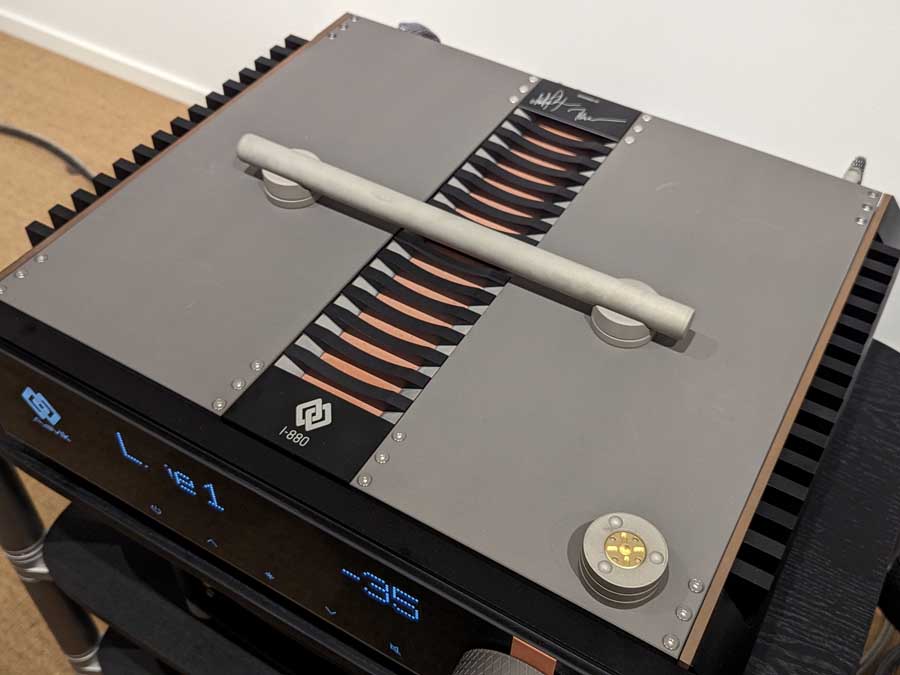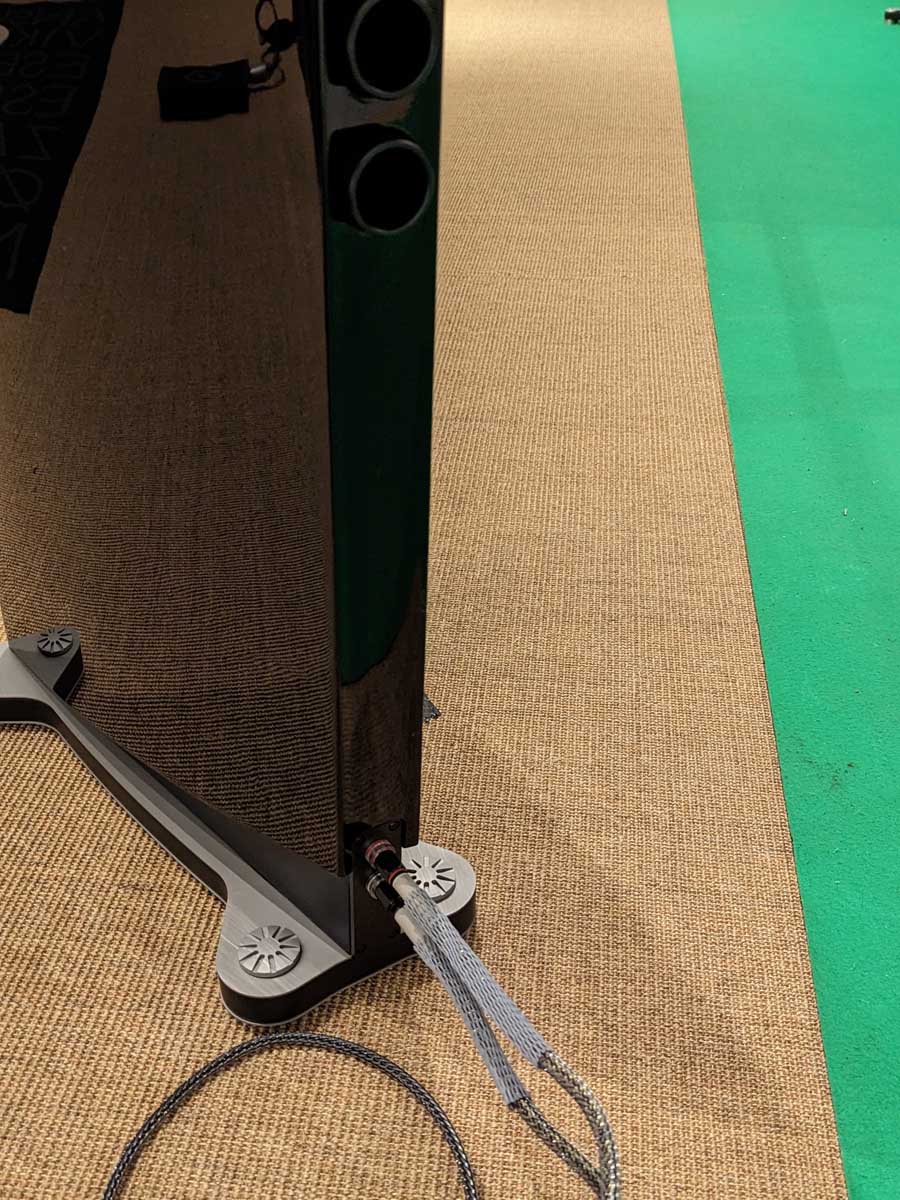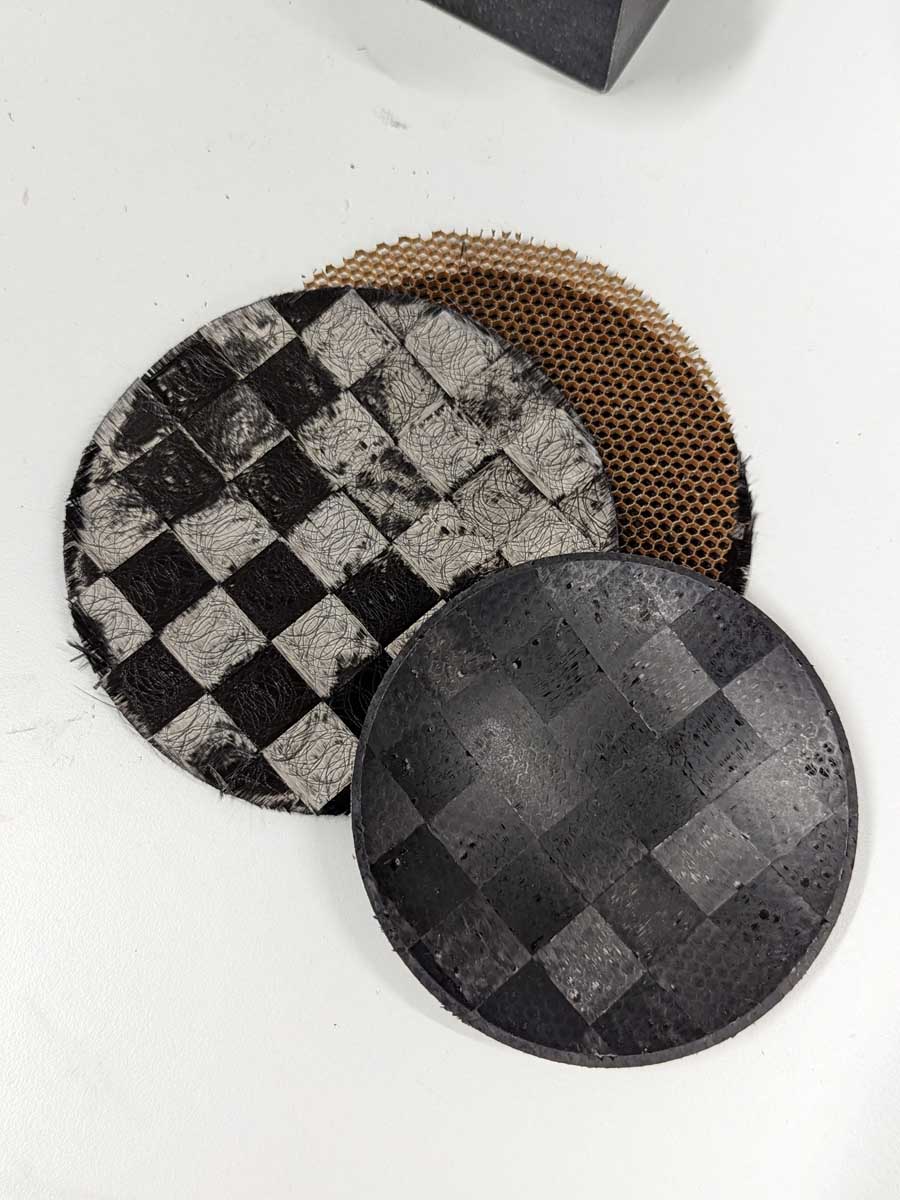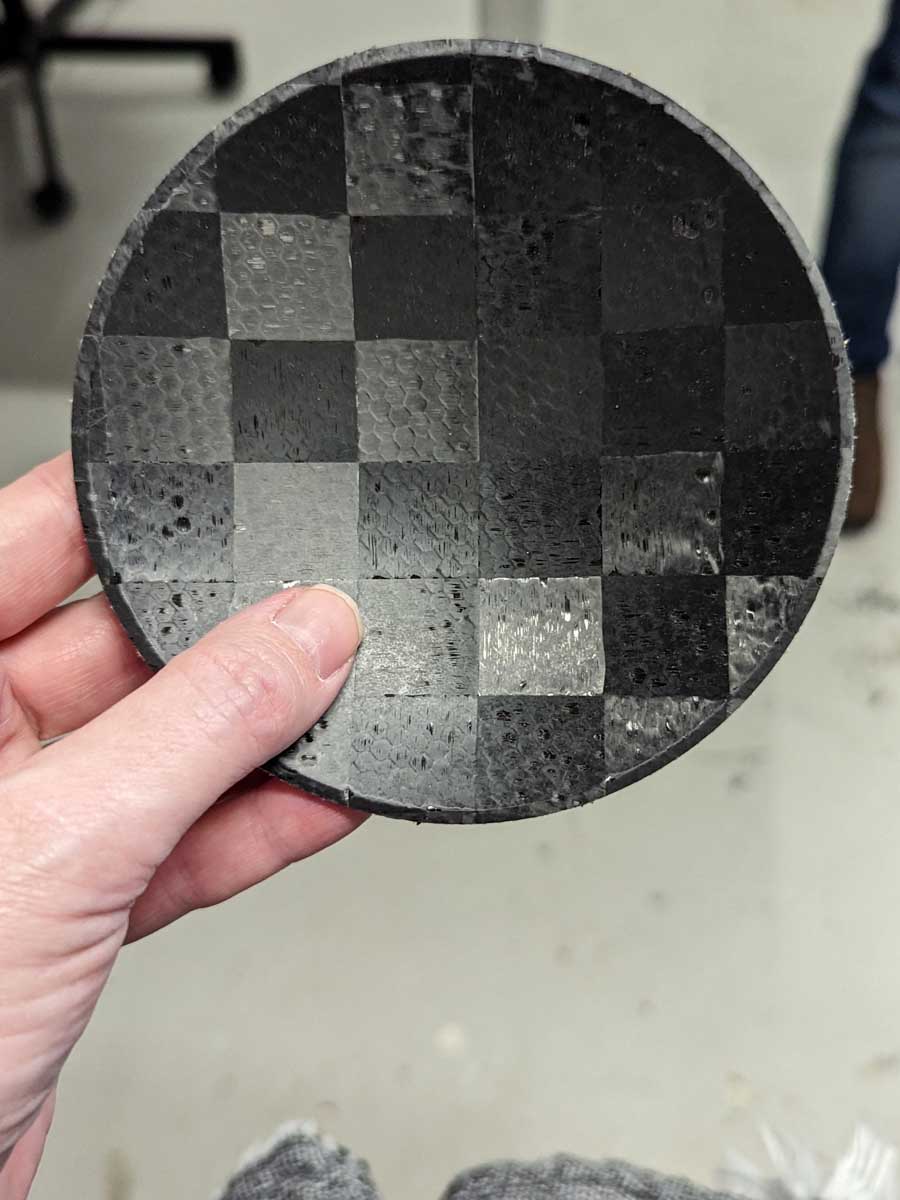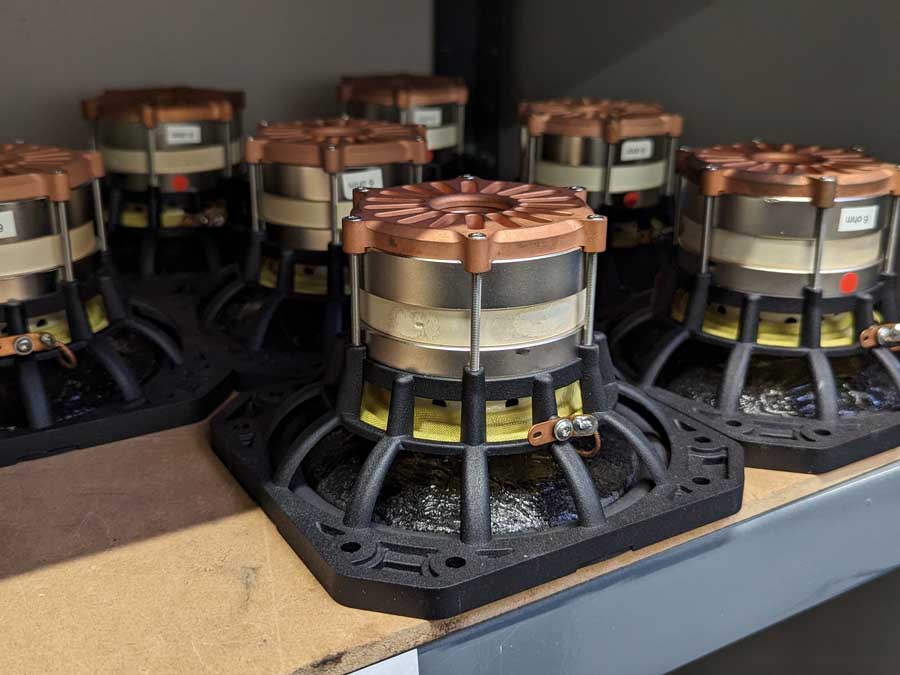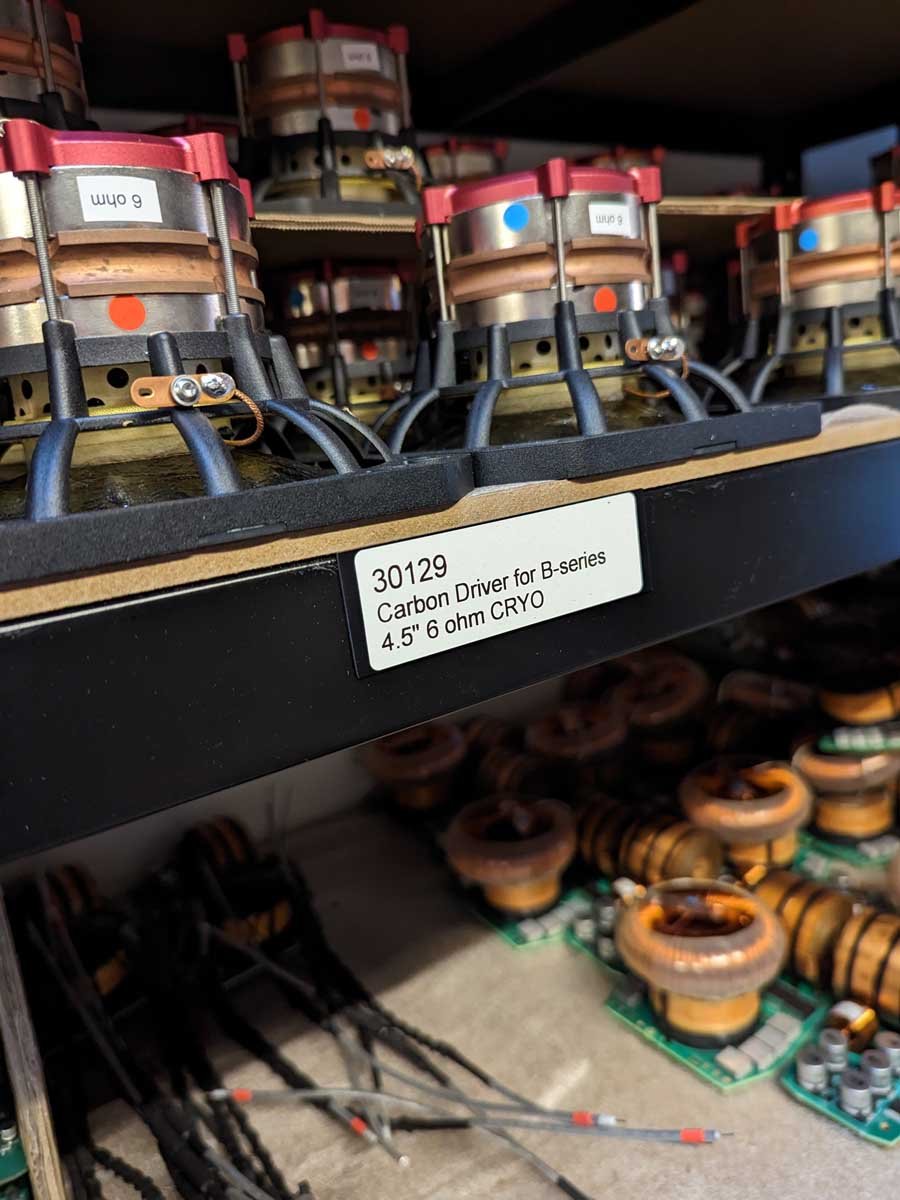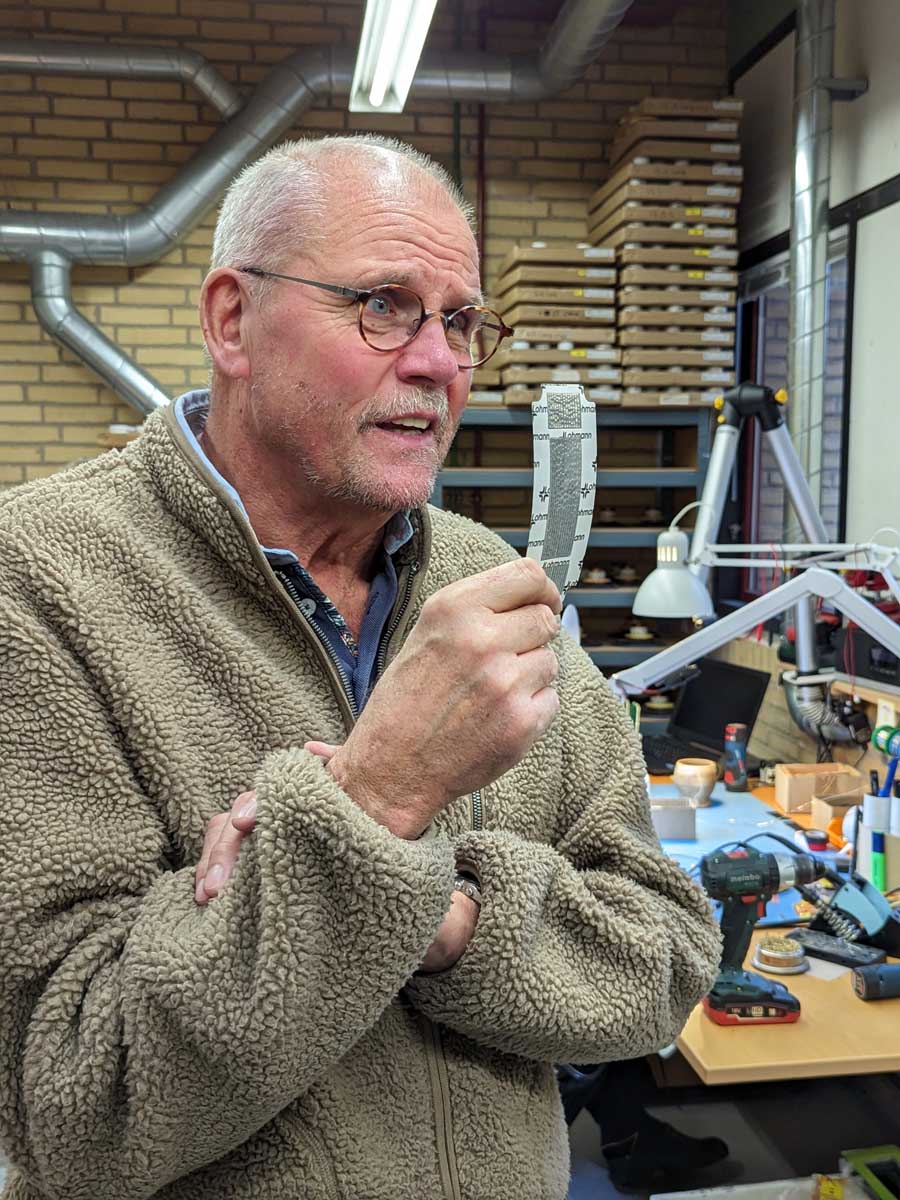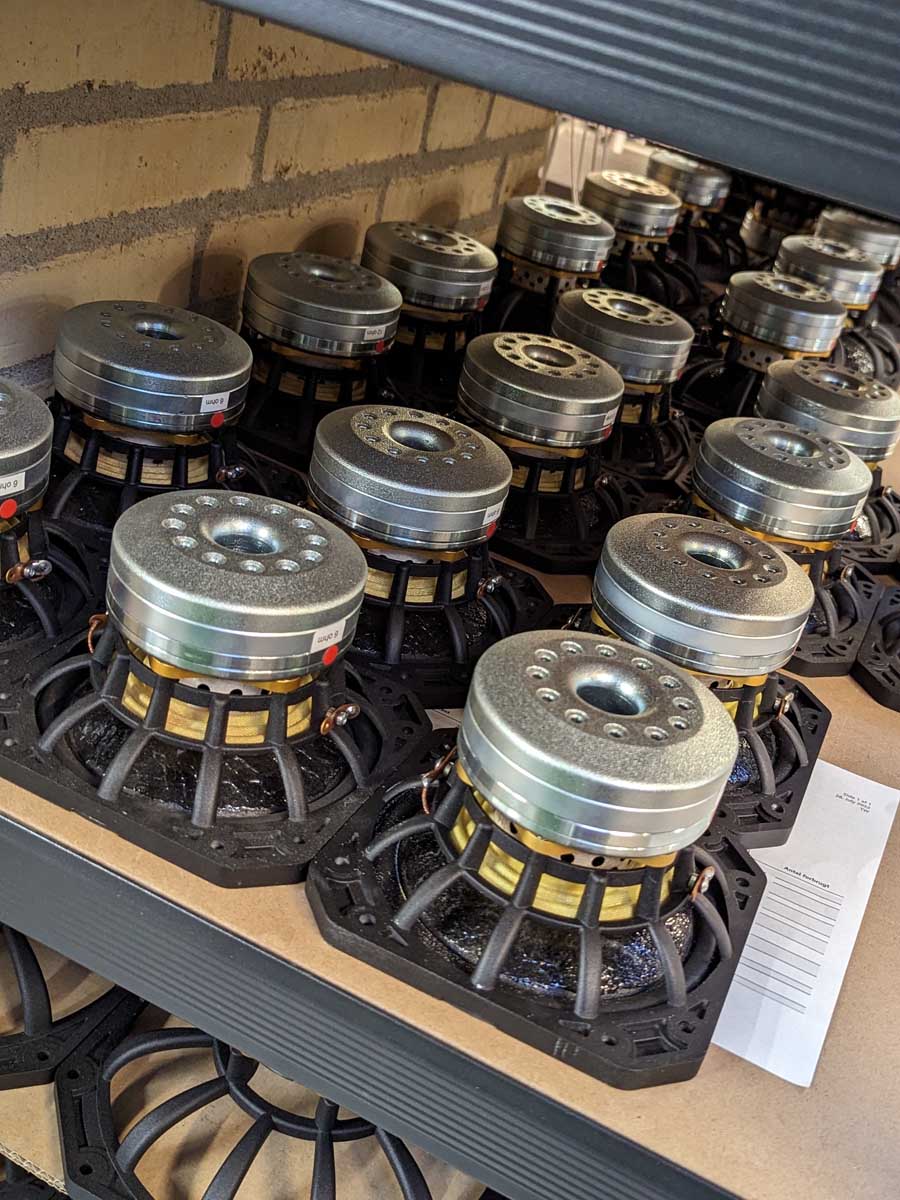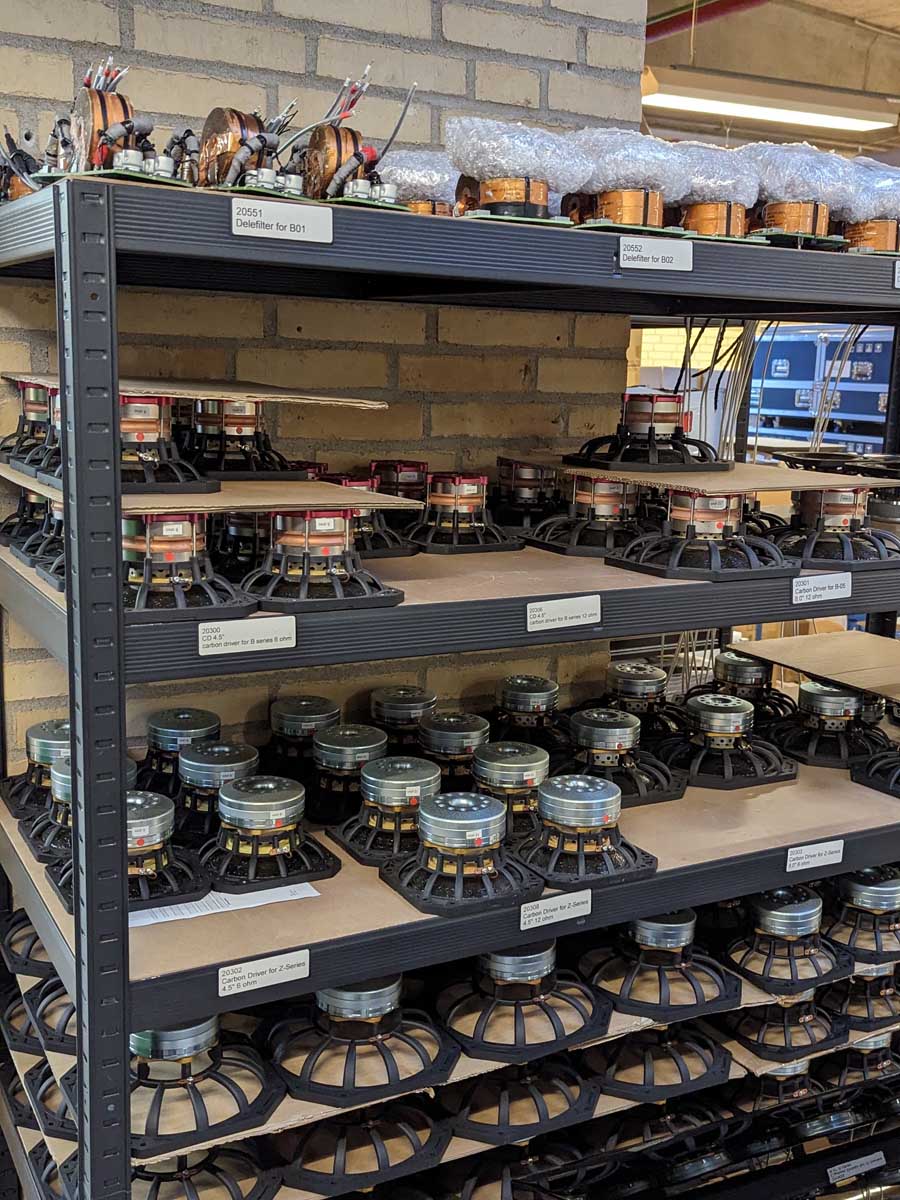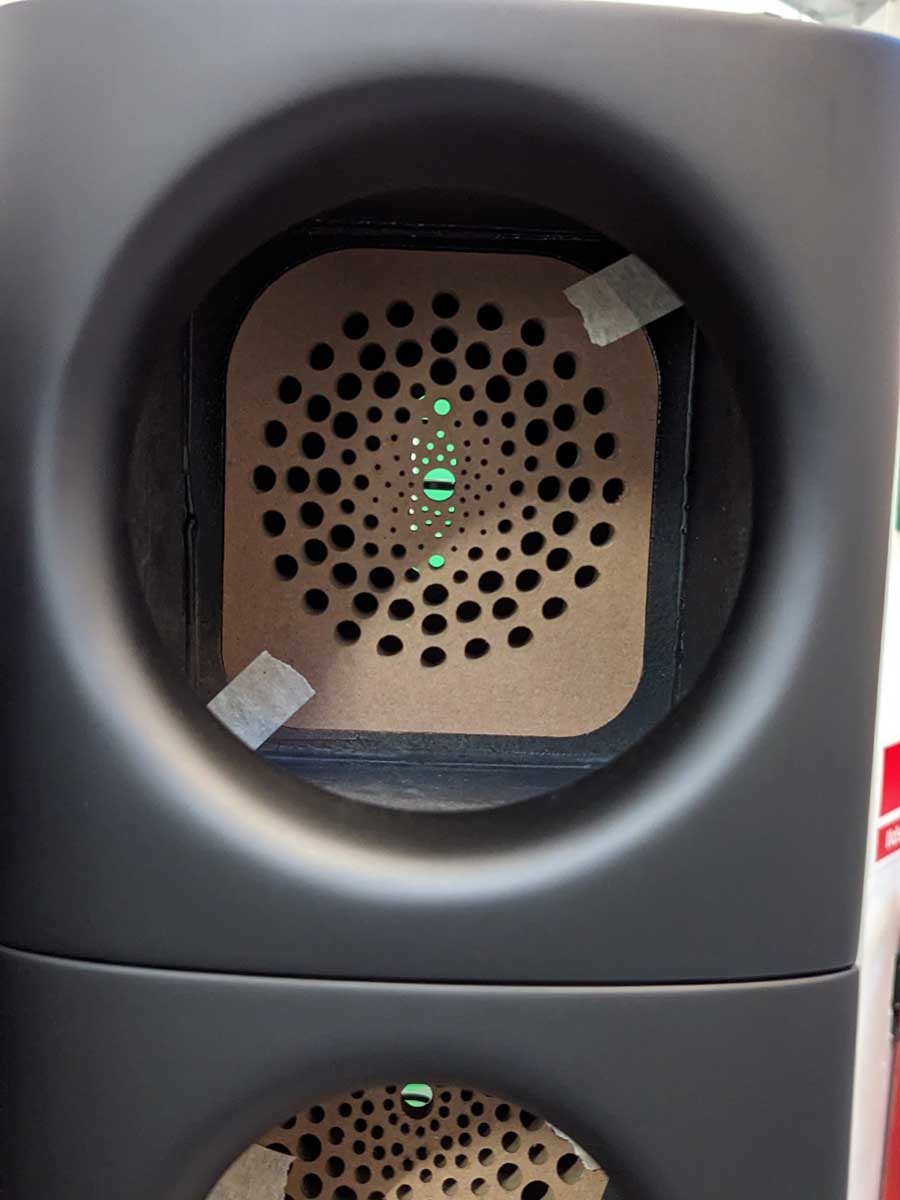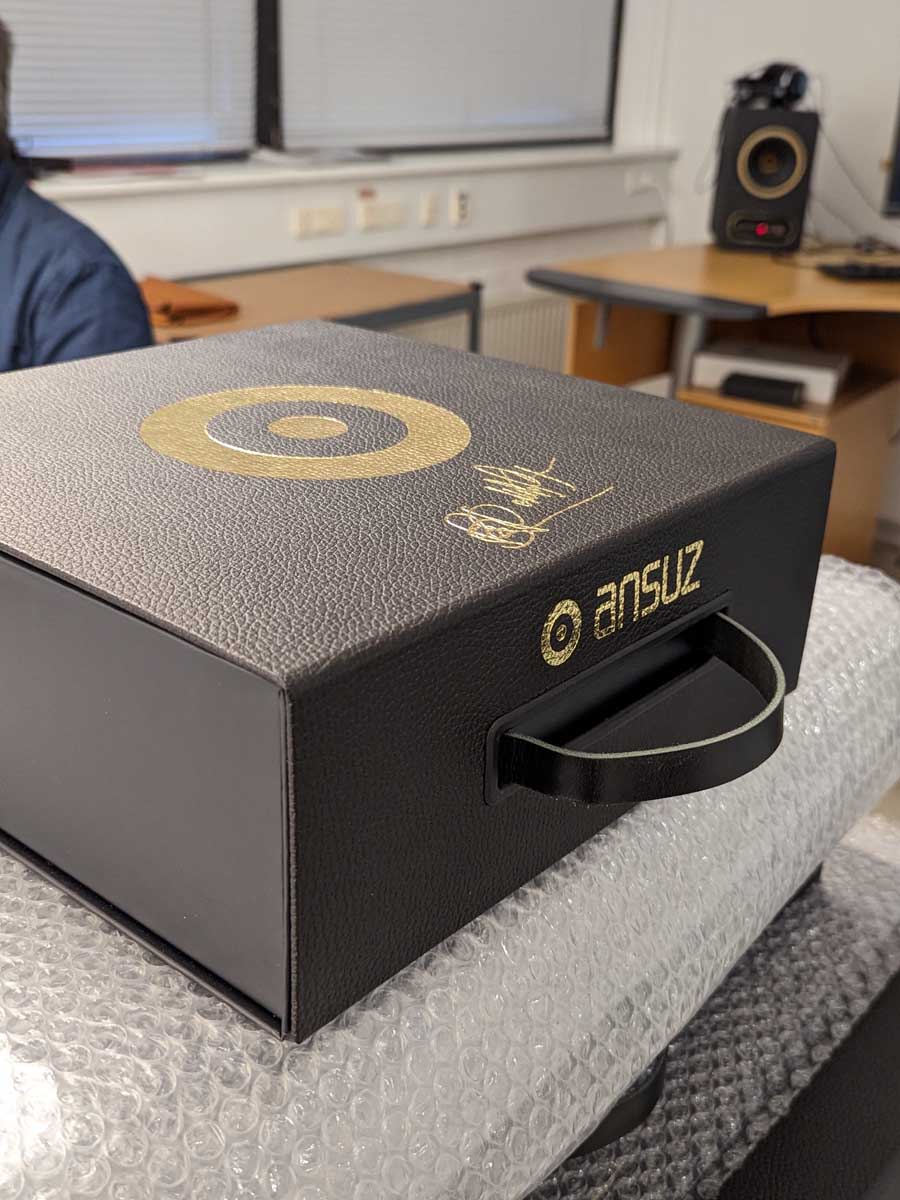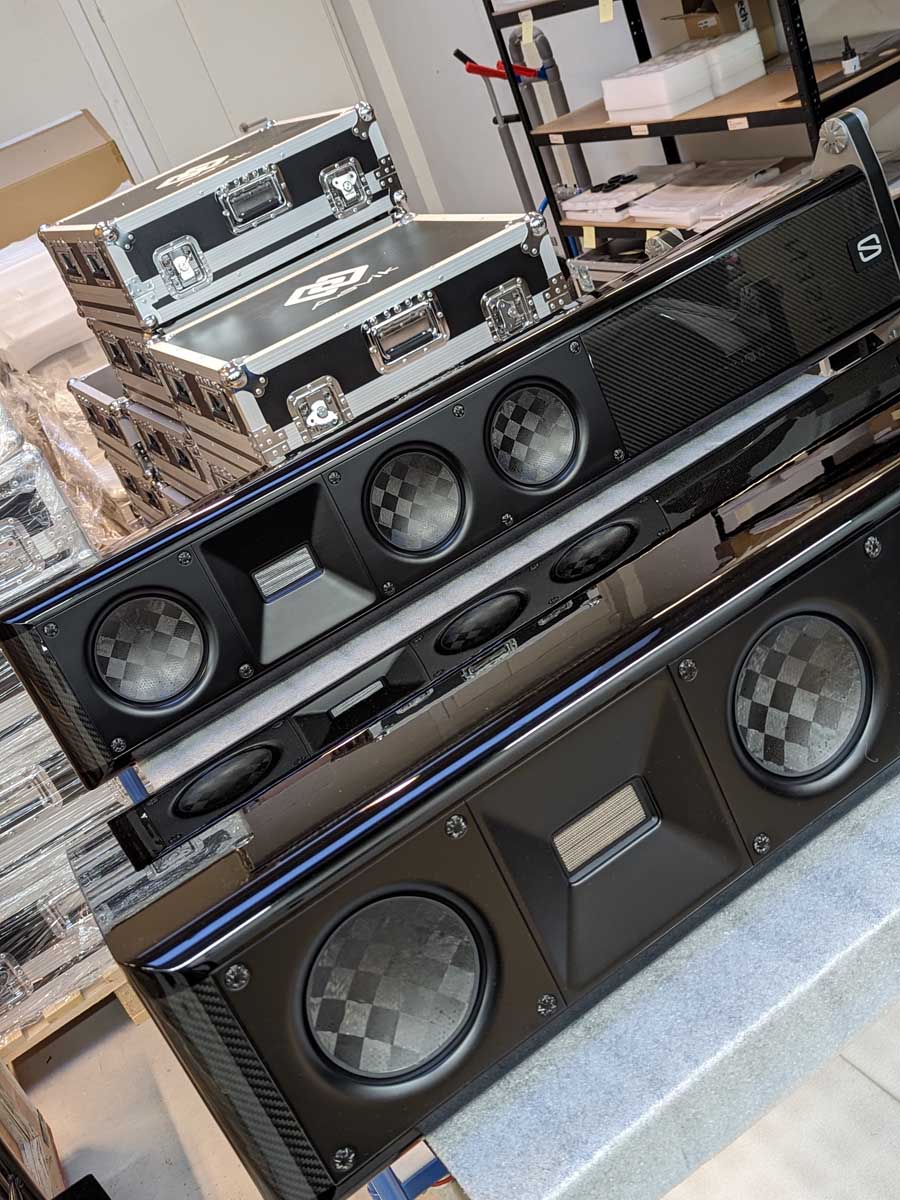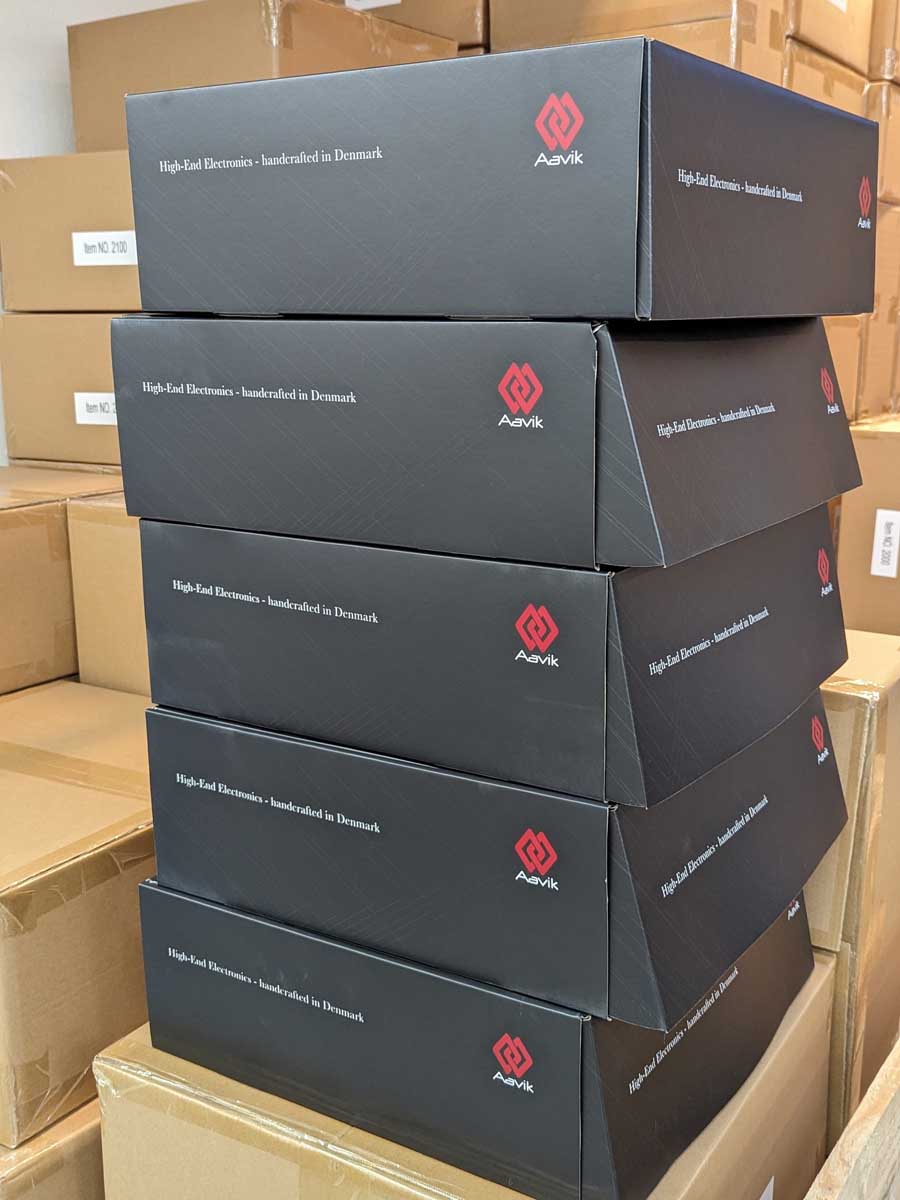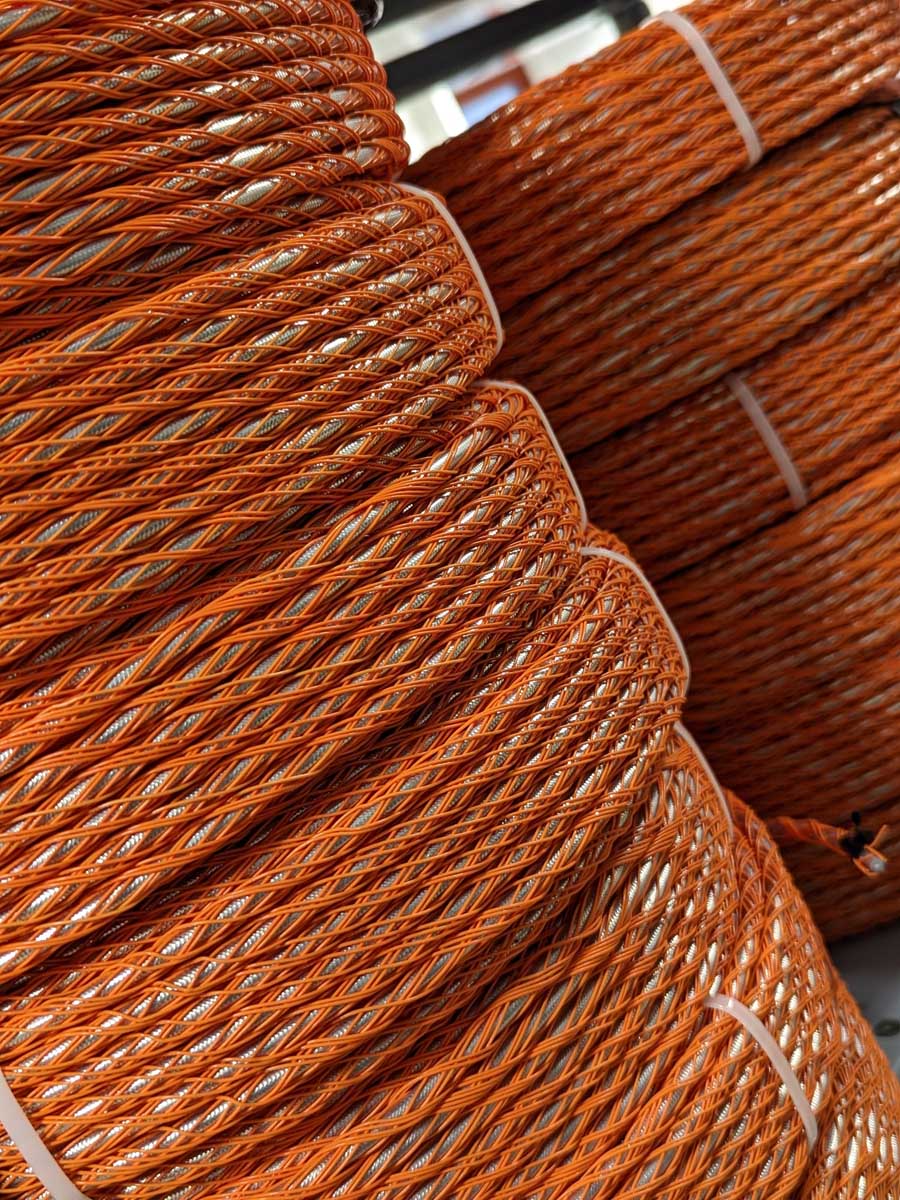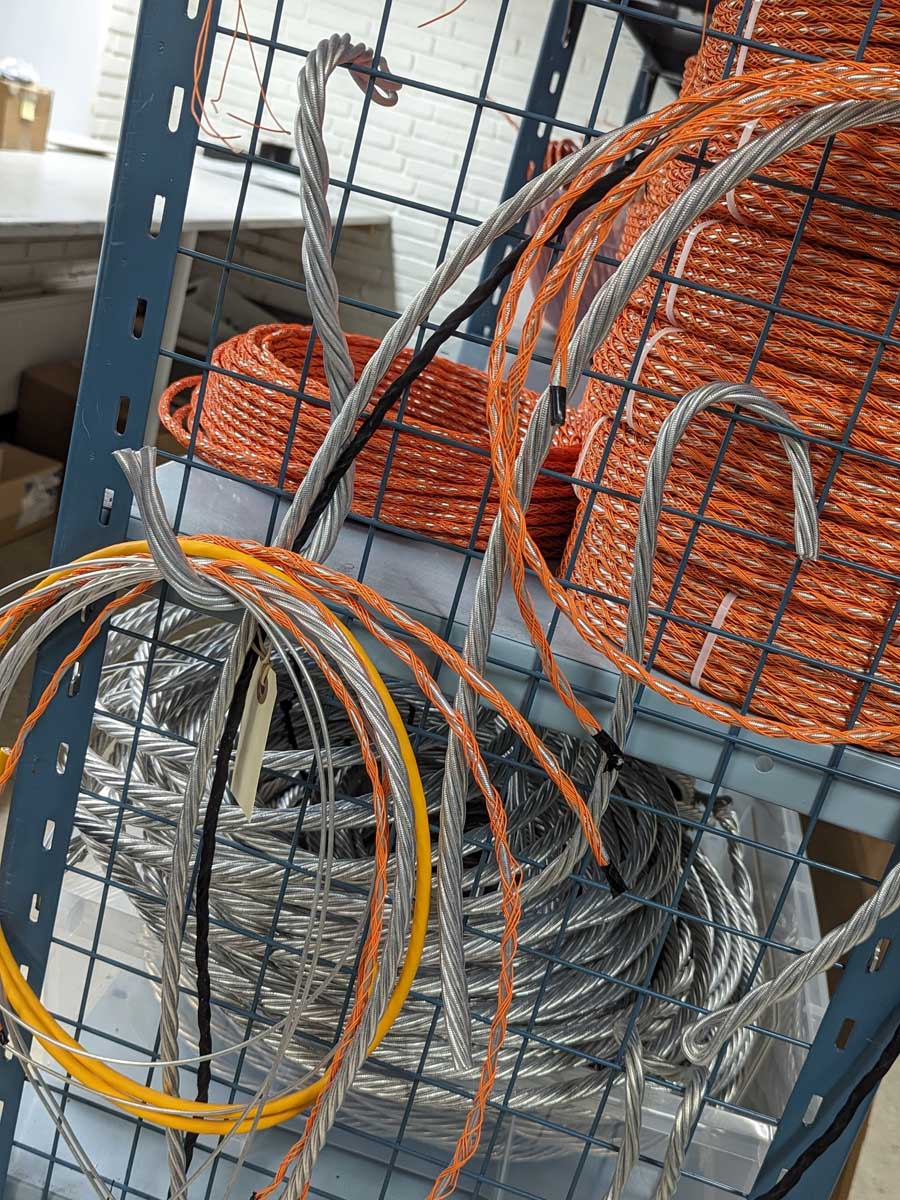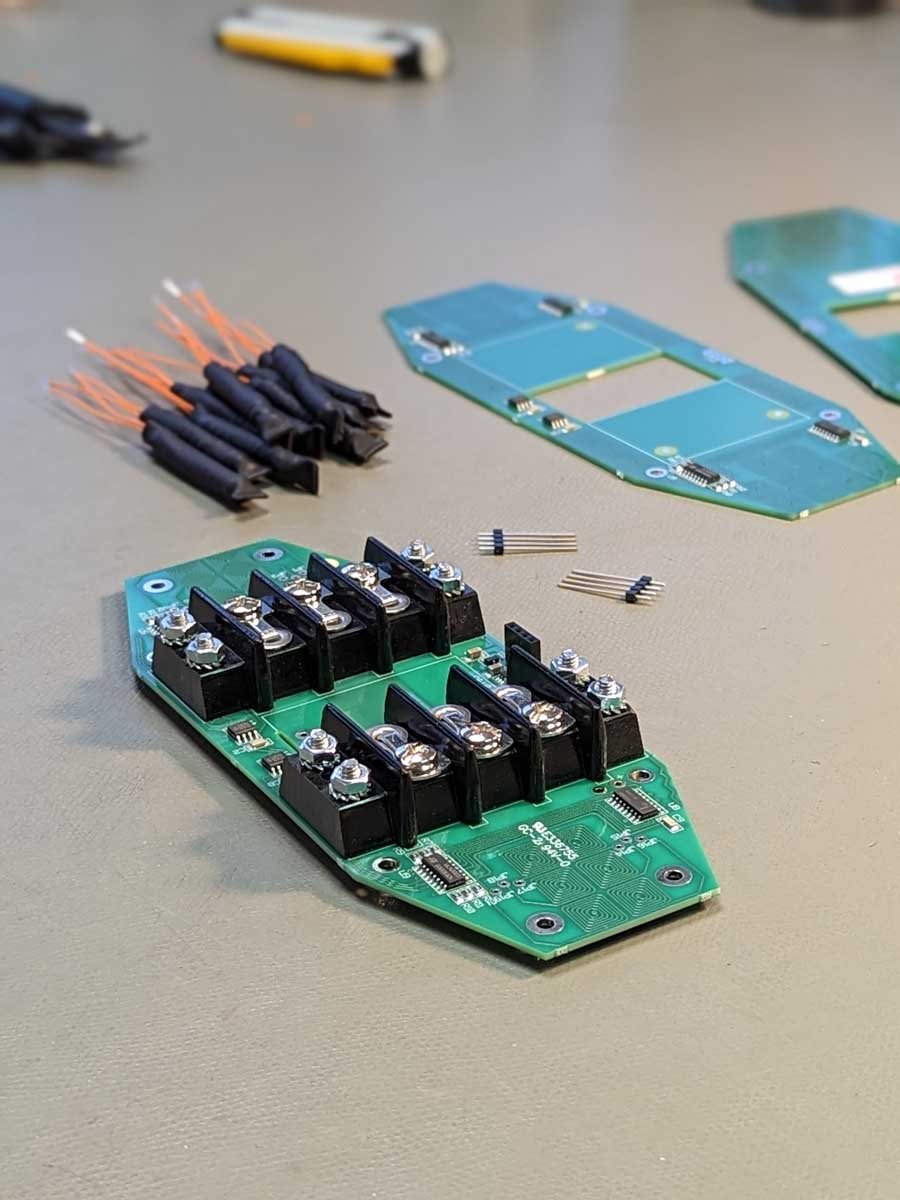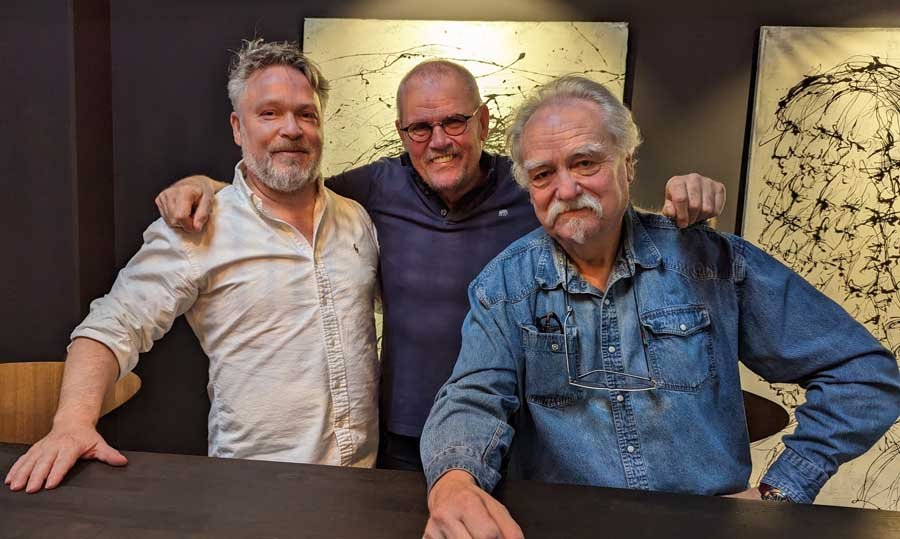HIFI PIG’S STU AND LIN VISIT AUDIO GROUP DENMARK
HiFi PiG put on their big coats and fly up North to visit Audio Group Denmark, the home of Danish HiFi brands Aavik, Ansuz and Børresen, for a couple of eye-opening days in Aalborg.
We love to travel to have a look (nosey) around manufacturers’ facilities and so when Audio Group Denmark asked us if we could visit them in, you guessed it, Denmark, at the start of 2023 we were more than happy to hop on the couple of planes it takes to get there and oblige.
AUDIO GROUP DENMARK: AAVIK, ANSUZ AND BØRRESEN
If you don’t know who Audio Group Denmark is then you will be forgiven, but whether you know the group name or not, I’m pretty sure you will recognise the brands that make up the group and you may well have even had the chance to listen to some of their products at one of the many shows around the world that they regularly attend. For those that aren’t aware, the brands represented by AGD are Ansuz, Aavik, and Børresen Acoustics. Broadly speaking, Ansuz deals with cables and tuning products, Aavik the electronics, and Børresen are in charge of the loudspeakers. There’s also a new brand about to be announced that will allow those looking to enter the AGD ecosystem to do so at a lower price of admission, though we were sworn to secrecy as to what this would be exactly. However, we did get to listen to one of the new brand’s products…we can’t wait to reveal more when the time is right!
BØRRESEN X SPEAKER SERIES
Those who attended the High End Munich event last year will be aware of the X3 loudspeakers, the first model in the Børresen X Speaker Series. and due to start shipping any time soon, costing around the ten thousand euro mark. Having listened to the X3s and another (yet to be announced) product in this range I can tell you now that these are going to be hugely popular and are likely to fly off the shelves – keep an eye on these pages for a review as soon as we can get our trotters on them!
LARS KRISTENSEN AND MICHAEL BØRRESEN
Lars Kristensen and Michael Børresen are the founders of Ansuz, Aavik, and Børresen and more recently Flemming E. Rasmussen, who many will remember as being the founder of Gryphon Audio, has joined the team. It’s probably better if I copy the company’s history from their website so as not to cock it up…
“As his father was one of the first high-end audio dealers in Denmark, Lars Kristensen encountered HiFi at an early age and has been passionately dedicated to the world of HiFi for most of his life ever since, including 20 years of service as a worldwide sales manager at Nordost from 1992 to 2012.
In the late 80s, when Lars was managing a high-end audio store in Aalborg, he met Michael Børresen who was a frequent guest there. At that time, Michael Børresen was studying to become an engineer. It was his love and passion for music that brought him to the store. Since his youth, Michael has had a strong desire to create and redesign things, and in that context, one of his favourites has always been to analyze individual audio components and seek ways to improve them significantly.
When Lars and Michael met by chance at a hotdog stand some years later, in 2003, a passionate conversation developed about Hi-Fi music and the completely untapped enormous acoustic potentials of audio components waiting to be unleashed. Michael also told Lars about his ideas of an innovative ribbon tweeter design, which Lars found highly interesting. Shortly after, Michael had manufactured a prototype and invited Lars for an auditioning. As a result, they jointly established Raidho, their own loudspeaker company. Lars and Michael’s determination to design and build audio equipment from scratch formed a strong foundation for future innovative and successful collaboration.
When the financial crisis hit the world in 2008, Lars and Michael decided it would be better to sell off the company to a financial partner. Three years later, in 2011, Michael presented his groundbreaking ideas for audio cables and, although Lars had actually sworn at the time never to enter the cable business again, he was absolutely thrilled with the audio cables Michael had developed. Lars immediately saw the potential of these innovative and groundbreaking audio cables, and with that, Ansuz Acoustics was born.
Michael’s extensive knowledge in the field of audio engineering combined with his pioneering spirit and passion for HiFi equipment drove his innovative quest to create newly designed audio electronics. He soon began to immerse himself in the development of new amplifiers. Of course, it wasn’t long before the Aavik U-300 unity amplifier was launched in 2015 paving the way for the foundation of Aavik Acoustics.
With the desire to take on new challenges, Lars and Michael left Raidho in 2017. They decided to fully commit themselves to further advancing their own two brands, Ansuz-, and Aavik Acoustics. In 2018, they complemented their range of audio products by launching a new series of speakers and established another company by the name Børresen Acoustics for this new brand.
Since then, they have continued to further develop all three brands and have been expanding their range of audio products which now includes cables, resonance control devices, audio-electronics and loudspeakers. At the end of 2020, Audio Group Denmark was established as the umbrella company for all three brands, Ansuz-, Aavik- and Børresen Acoustics.
In May 2021, the founder, chief-designer and former owner of Gryphon, Flemming E. Rasmussen became the newest member of Audio Group Denmark’s design and development team. Flemming E. Rasmussen is a perfect fit for the company not only because of his constant drive and curiosity to delve into new areas of acoustics to create outstanding Hi-Fi equipment but also because of his untiring creative potential, and his 35 years of in-depth experience in the Hi-Fi industry. His mission is to pioneer into so far untapped areas of audio technology, design, and innovation for Audio Group Denmark”.
So, there you have it.
AALBORG THE HOME OF AUDIO GROUP DENMARK
The company are based in Aalborg in Denmark and their facilities are impressive. There are several listening rooms that have been properly treated, the usual production facilities, staff dining area, distribution areas, and an Irish pub.
THE TOUR
Upon entering the building we got to meet the forty-strong team and there was an immediate sense that everyone is happy and content – I like this and it’s also clear that the team are well looked after.
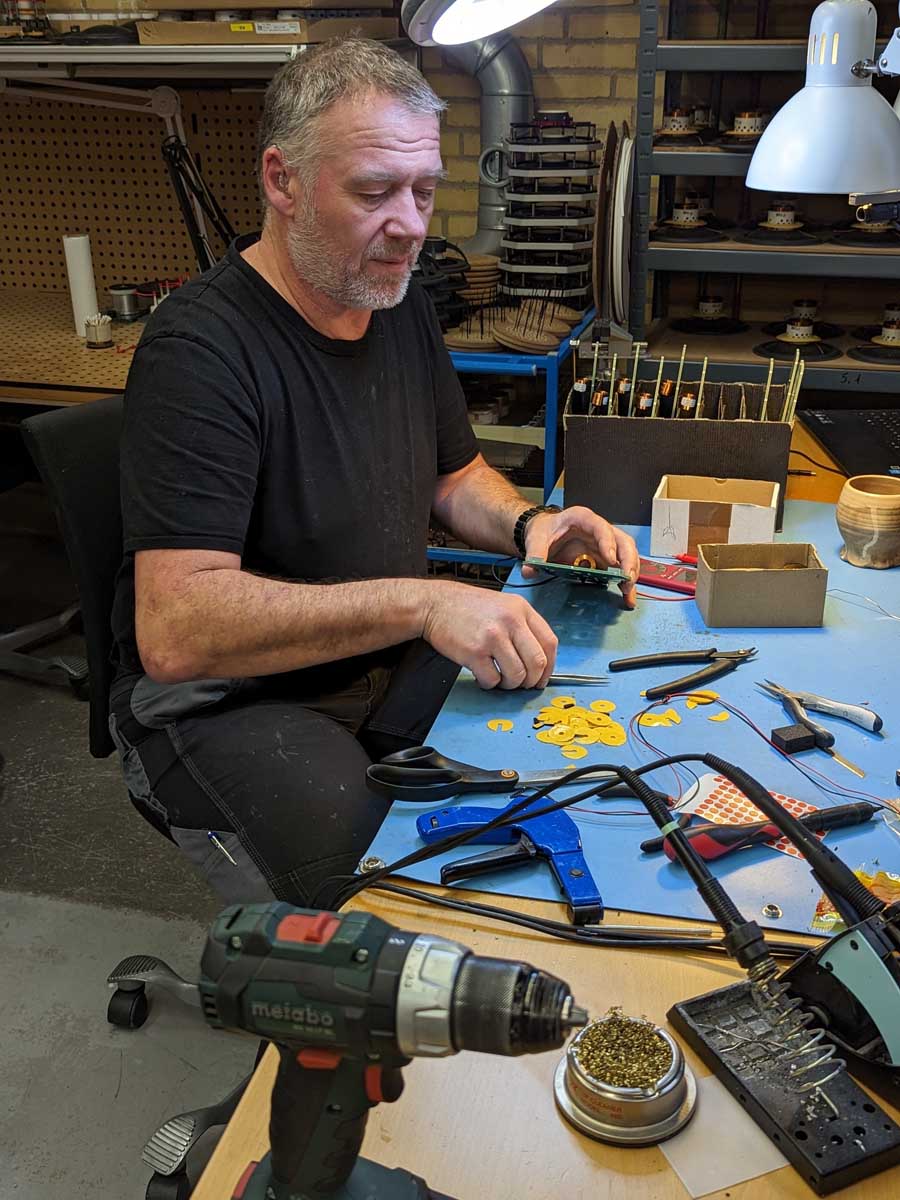
Some of the highly skilled Audio Group Denmark team who we met on our tour of the manufacturing facility
My main takeaway from our initial tour of the facilities was that there’s a lot of attention to detail and that the company aren’t afraid to invest in the machinery to get the products they want, and nor are they afraid to invest in their people. With regards to machinery, I was especially taken aback by the machine used to cut and strip wires that will later be used in constructing audio cables etc. Lars that was showing us around at this point did tell us the accuracy of the machine and how it could cut a cable to a very specific length and strip it remarkably accurately too. This attention to detail was also carried through the rest of the tour and we hear the phrase “length matters” several times during our visit. I’ll no doubt mention this again later but it would seem to me that the core values of AGD are that materials matter, innovation is encouraged and that the whole team are wildly enthusiastic about the company and the products they produce.
Anyway, tours of facilities are always a bit of a blur – there’s so much to take in and it’s difficult to get much more than a “feel” for the company and its philosophy – it’s only over the course of the remainder of our time with the people and products of AGD that we are able to get a better grasp of what they see as being important to sound and the things they make that allow us to enjoy our music.
HIFI DEMOS
Over the course of our visit we were given several demonstrations of what I considered to be pretty out-there concepts and I want to say a little about my thoughts and how I personally approached these presentations. As always, my go-to attitude about most things that are a bit esoteric is to regard them as a “load of bollocks” until my ears either confirm or contradict this starting position. I’m also a previous sales trainer and so I tend to purposefully turn off from the sales pitch introduction to products, particularly when a person doing the demonstration starts to try to suggest the things that we may or may not want to be listening for. However, my mind is open, but I guess I would describe myself as an interested “sceptic” when confronted with stuff that I either don’t have the knowledge to understand or which flies in the face of common sense. I’m not interested in measurements that purport to either prove or disprove a concept and I’m not interested in whether folk think me a nutjob for my opinions. In short, I trust what my ears tell me, though I’m well aware that there are a good few folk out there that believe measurements are the panacea for audio and tell us everything we need to know.
So, the first demonstration we went into was with Frits Dalmose who is the sales director for the group.
DAY ONE. DEMO ONE
Hellos and introductions over we were led into a room at the top of the AGD building with a sofa where we sat, and in front of us there was a curtain. Music played and we were asked to guess the kind of system and room that lay beyond the curtain. I went for the lowest common denominator (not wanting to make a tit of myself) and guessed Sonos speakers and a pair of subs…or a soundbar…or a pair of standmounts and a pair of subs. Curtains opened and my guess was, as you would expect, perfectly accurate – if perfectly accurate is shooting at the opposition’s goal and actually scoring an own goal. For those interested, it was a pair of compact Børresen Acoustics floorstanders, Ansuz products and cables…and a Primare amp. We were a little surprised too but AGD often use their competitors’ products for a couple of reasons, first to show how especially the Ansuz products and cables can benefit other brands’ components, and to show how the Audio Group Denmark brands compare to others. The team have a healthy respect for other brands and good relationships with many of them.
Ansuz refers to the power distribution block they use as being the “heart of the system” which I found pretty interesting and, to a large degree, a bit counter-intuitive…at first. Anyway, the ANSUZ X3 power block was changed for one that used aluminium in its construction. The theory here is that aluminium is in itself a problem product. They tell us that aluminium is avoided in all their boxes and instead they use composite materials with strong grounding included. Anyway, some music got played and the music did become flatter and less lively. The same happened when Frits changed out the ANSUZ cable for a different cable. Naysayers are likely jumping around their rooms and pulling out their hair at reading this. Then went in a power conditioner and my notes say that the bass is “really fu%^ed up” and the sound “even flatter”. This is an interesting point for me as up until getting our Torus Power transformer, I always suggested folk put their (specifically) amplifiers directly into the wall and try to avoid mains blocks or conditioners…for amps. Overall, in this system, the benefits of the ANSUZ X3 power block and their own cabling were clear!
Frits then went on to demonstrate the company’s SPARKZ AC HAROMIZERS which, for me, is where the voodoo started on our visit. These are essentially a shucko plug within which are the company’s Tesla coils. They are designed to plug into unused mains sockets and into unused sockets on power distribution blocks. Something happens when one is added to a free mains socket and I thought the system seemed a little more focused. Adding more increased this focus. I asked Frits about what was supposed to be going on here as I was a bit dumbfounded that I actually heard anything at all – as I say, I take all this kind of thing with a generous pinch of sodium chloride – and I was told that the idea here is to remove high frequency “noise” from the mains. Then a SPARKZ TC 3 (bigger and with more Tesla coils inside) was added and the effects I heard in this system were pretty obvious over and above without their use. The effect to me was a more relaxed presentations, though I was told that this is due to a reduction in the noise-floor of the overall system.
A bigger and “better” mains block, the XT3, was added to the system in place of the X3 and again there was a perceived improvement in focus and ease in the music.
At this point I need to stress that these are not reviews of these products, they are merely my observations of what we were shown in conditions and systems that were new to us. My belief is that valuable reviews of any product can only be done in your own system and in your own home environment. With that said, something is definitely happening with this stuff and whilst I would have loved to have confirmed my initial thoughts on this all been voodoo-bollocks, I’m afraid I can’t do that. I’m also well aware that there are many out there in audiophile land that will be reading this and will scoff, claiming foul and that we were somehow duped…so be it, I am merely reporting in language as simple as I can make it, what I experienced during these demonstrations.
We now had a demonstration of the ANSUZ DARKZ which are “resonance control” blocks that go under your kit or under your speaker cables. They come in different materials and even with different coatings. If you want to read more about these then you can do so here.
The first dem of the DARKZ was to have a listen with some C2T DARKZ fitted underneath the amplifier and then to remove them. I didn’t hear as big a difference here as to with the whole changing of the mains blocks and whatnot outlined above, but there was a small effect of some kind going on. Frits moved up the range of DARKZ that all use different materials and different coatings and this is where I did experience bigger effects. The biggest effect for me was when moving from the stainless steel S2T DARKZ to the Titanium T2T DARKZ, with the effect being a definite focusing of the sound and the spaces around the sound – spatial cues were more apparent to me. There were two other DARKZ added in the form of the T2 SUPREME (Zirconium and Diamond coating) and Z2 SIGNATURE (Zirconium) and there was an effect, but the biggest effect remained the jump from S2T to the T2T DARKZ.
This is interesting stuff, in my opinion. It may fly in the face of accepted logic and, as I say, there will be those who say I was duped, but for me there was an effect and that effect was a positive effect.
We then got a demonstration of the ANZUS SORTS which are designed to be placed in empty RCA, USB, XLR, and LAN sockets. Again, something is going on with all of these being added but for me the really big jump in sound, and it wasn’t subtle, was when inserting one of these doodads into the spare XLR socket on the amp. I have no explanation why and don’t offer one as to why there is an effect at all and why that effect should be most noticeable when used into an empty XLR socket!
All that was a bit of a shock to the system and it was clear at this point that this was not going to be your standard visit to a manufacturer’s HQ. Hold onto your seats because this gets odder and odder by turn.
DAY ONE. DEM TWO
Around the AGD HQ are a number of demonstration rooms and in this particular dem room we were greeted by a pair of (nearly) €70K Børresen 02 Silver Supreme speakers, an AAVIK I-180 amp (€6K) and associate AAVIK streamers etc. All cables in this system were the ANZUS D2 level which sits around the middle of the company’s offerings. The power block was the MAINZ 8 A3 (€3700) and there were T2S DARKZ grounding blocks in the system too, both under kit and under the cables.
It’s probably easiest if I describe what was done to the system and what we heard as it was done.
First of all the DARKZ were removed from underneath the power cable going to the mains block and whilst the sound didn’t collapse (this I found is a favourite buzz word used by the folk carrying out the dems, in this case Frits again) it did lose a degree of focus. Then Frits changed the power cord between a 2m cord and a 4m cord – the 4m cord sounded better. Yes, this sounds ridiculous, but this is an effect.
Then the X2 power cable that was in use was changed to a D2 power cable (a considerable jump in price) with the latter having more conductors and a lower inductance and my notes tell me that with Jeff Becks “Space For the Papa” (I heard today he died – RIP) I was able to hear more into the recording and hear spatial information and details with the D2 in place.
We then compared more cables and each time there were audible differences in presentation with the really dramatic effects coming in when the cables with the plastic “blocks” on the cables got brought out. These blocks use “Anti Arial” coils and other “technology” but their effect is pretty obvious and again not very subtle. The really ridiculous effect came when adding the D-TC GOLD Signature power cable. This is outrageously expensive and I looked at the price afterwards with a good degree of incredulity, but the thing works and it works very dramatically. I struggled to describe the sound I was hearing but there was a good deal of arms waving about and hands grasping a non-existent ball in the air in the space where the music was. To me, and the best way I can describe this, was as if the lack of noise in the recording had been compressed into a ball and that something was actively affecting the sound. This cable is unobtainable for all but the most wealthy of people and as such, I have no qualms in saying that it is the most incredibly baffling thing I have heard (up to this point in our tour) ever. My thoughts are that as I can’t afford it, and not many people can, there is no reason n for me to hold back on my enthusiasm for what I was hearing. It’s an incredible experience and one you should try to experience if you are able, safe in the knowledge that you are very unlikely to ever be in a position to go out and spend this kind of money on a cable for your system, let alone a set to power each component. The jump from the already expensive cable we had in immediately before this switch was the biggest jump in perceived performance for me.
What I found interesting here is that we were not doing anything else to the system, and the amp we were using was relatively inexpensive, other than changing the cable going to the power block. I don’t believe anything unless I have the opportunity to experience it for myself and, again, I entered this demonstration fully believing that I would hear very little over and above the use of slightly better power cables and the (mostly) subtle effects these changes can have.
DAY TWO. DEM ONE
Here we got to listen to a pair of speakers that we first saw at Munich last year and that will see the official light of day sometime in Q2 of this year. The X3s are a relatively budget offering when compared to the other Børresen speakers and they are a floorstanding 2.5 way speaker with in-house drivers and tweeter. For their €10K asking price I can see them being a bit of a worry for some brands and their speakers at this kind of price.
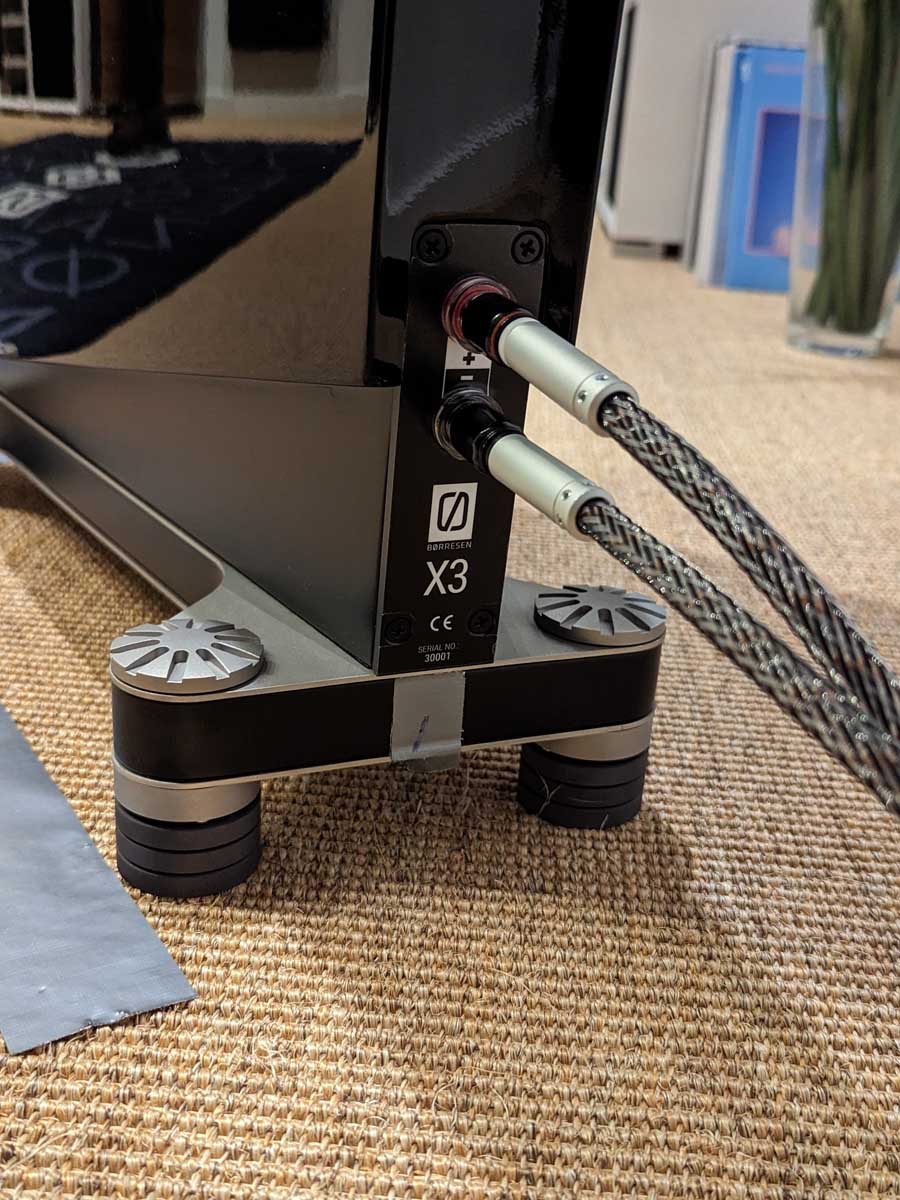
Owing to the secret nature of the main electronic component in this system, we focused mainly on the X3 loudspeakers for our pictures…more will be revealed soon!
These speakers were being driven by a one-box system that, again, is a bit hush-hush at this point in time and that, like the speakers, is going to be at a price that is at an entry-level point to the AGD ecosystem.
The whole concept here is to attract a younger buyer and I really do think that, given the performance of this as a system, AGD will succeed in this. I can also see the system as being an endgame for many in that it will offer a performance that will satisfy most people who will need only add a Qobuz account and be done.
The speakers with the all-in-one box and its Pascal Class D modules offered up a big and fast system sound that, it has to be said, was right up my street and sounded fabulous with the electronic music that we got to listen to and I cannot wait to have this system to play with at home at some point in the future, though I’m guessing that demand will outstrip supply in the first instance!
DAY TWO. DEM TWO.
This was an interesting demonstration and essentially started us off listening to a well-known and very popular amplifier from another brand and then moving through and up the AAVIK range of amplifiers using the same Børresen speakers and the same AAVIK AC and streamer with the same D2 level cables throughout.
What is interesting about this demonstration is that the amps are essentially the same. They have precisely the same boards and whatnot in there and differ only in the number of Tesla coils and “anti-dither” technology they have onboard.
The first amp plumbed into the system was the I 180 retailing at around €6K which was a little bit, but not much, more than the competitor’s amplifier. However, in this system and on this day, the AAVIK was the better of the amplifiers and majored in speed and control through the bass and a more spacious and airy mid and mid-upper band. Overall my notes tell me that this amp was a more “coherent” sounding amplifier and for me that coherency was manifest in a sound where no one frequency band dominated or took centre stage.
The I 280 amp was up next and this adds more Tesla coils and tech and costs an extra €4K at €10K. This is a clear step up in performance from the I 180 and to me it indicates that the noise reduction systems and tech (Tesla) in the amps are obviously doing something and have an overall positive effect. I’ve reviewed this amp on the past and when I read about the only differences in the range being (predominantly) the number of Tesla coils each amp had my initial reaction was to mentally suggest to myself that this was a bit of spin on behalf of AAVIK and my thoughts were along the lines of “Come on, guys, we aren’t that daft to fall for this!”. I was wrong!
The I 580 gets rolled out next and we get told about the volume control on each of these amplifiers being a resistor-ladder controlling a processor where the resistor-ladder is connected to the feedback loop and uses LDRs for connection – essentially there is no physical connection. Yes, this is a better sounding amp than the previous. What strikes me at this point is also the really sensible LED display. The red LED display looks a bit antiquated and old-fashioned when compared to a lovely looking LCD screen that displays the album artwork and whatnot. When the title of the tune which I don’t know scrolls across the screen it is clear for me to read from the other end of the room and I now think this is actually a pretty sensible approach – YMMV.
Next up the ethernet switch gets played with. This is an interesting product and one of which I am hugely sceptical….or was. ANSUZ don’t claim to do anything with the zeros and ones that travel down the ethernet cables and through the switch. What they do claim is that their products remove high-frequency noise from the analogue signal that carries the digital information. Inside the switch is the Tesla and Dither technology which we have mentioned earlier and throughout this write up. As we move through the range of switches (that go up in price considerably) there are improvements to the sound at every step. Things get somehow cleaner and instruments and noises in the music stand more on their own…it’s difficult to describe but it’s absolutely obvious when you hear it. The biggest step up for me was between the A2 switch (€3200) and the D2 switch (€5360), though the D-TC Supreme was marginally better sounding than the D2 and more than double its price.
I ended up turning to Linette at the end of this demonstration and telling her I was thinking of ordering one of the D2 ethernet switches on the back of this dem and I got zero resistance!
Then we had a play with ethernet cables that range from the X2 at €640 through to the D-TC GOLD Signature at €11 000. From the X2 to the A2 there was an improvement in spatial cues. From the A2 to the D2 there is something bigger going on that is hard to put our finger on but is definitely there. The D2 again is the sweet spot in the range for me!
Look, I know full well I’m talking about ethernet cables and ethernet switches here and they are something I have personally steered very clear of getting involved with reviewing, but slap my ass, call me Nigel, and colour me converted – there is something happening here, that is for sure! I do not know if this is happening in other brands’ products as I don’t really have a great deal of experience other than trying an audiophile ethernet switch and feeling it had some effect to the point it remained in the system. What I do know is that in these dems and in these systems, the switches and the ethernet cables used had an effect!
DAY TWO. DEM THREE.
This demonstration was hosted by Lars Kristensen who is the founder and CSO/CMO of Audio Group Denmark. He is as an enthusiastic a person as you could ever wish to meet.
The system we listened to was a pair of large floorstanders that we can’t talk about but were right up our street and which will be available sometime mid-2023, and the company’s I880 amplifier.
The following information about the I880 amplifier is lifted from when HiFi PiG ran the news about its launch and I include it here as it gives some of the thinking behind the whole philosophy of these companies which I think is both useful and interesting to you, dear reader:
AAVIK say that the primary development goal of this series was to create a powerful non-switching pure Class A amplifier with the lowest possible output impedance that would contribute to a better signal and less noise, thus improving speaker performance, resulting in a much more organic sound and more musicality.
In mid-2021, Flemming Erik Rasmussen, founder and former owner of Gryphon Audio, became a full-time member of Audio Group Denmark’s design and development team. With more than 35 years of experience in creating and realizing “dreams” and his artistic passion for designing HiFi equipment, he was the perfect fit for Aavik. This was the beginning of a dynamic, and productive collaboration between Michael Børresen with his innovative approach, and Flemming Erik Rasmussen’s artistic and aesthetic design touch. He and Michael Børresen embarked on designing and developing a new innovative Aavik amplifier that would elevate the quality of musical authenticity into a new dimension. The result is the new Aavik 880 amplifier flagship series.
Through a long and intensive research and development process, Aavik’s engineering team identified several characteristic elements in the traditional Class A amplifier design that they believed could definitely be improved.
To avoid switching, Class A amplifiers typically apply a high constant current to the output devices. This approach is not only associated with high power consumption but also can adversely affect sound quality. The traditional Class A power supply consists of a large transformer and large capacitor banks. Aavik says that a large transformer has two downsides. First, the many windings create undue induction, which in turn means transient delay. Second, these many windings create stray capacitances, which cause high-frequency noise from the mains to enter the amplifier. Michael Børresen and his team of engineers took on the challenge and found another way to prevent the power amplifier from switching over.
They designed a circuitry that constantly keeps the bias spread 0,63 V above the required current, no matter where it is in the cycle. So, no matter how much current the power amp requires to perform, it always stays in Class A up to 2×200 W into 8 ohms, while at the same time not consuming unnecessary power.
This significant reduction in the power requirements of the amplifier allowed Aavik to design the capacitors as smaller units and place them locally, so that essentially each of the eight pairs of output transistors has its own capacitor bank right next to it. This means that the current does not have to flow through long wire harnesses and long circuit boards. The current is always directly at the output transistor, which means a shorter signal path and therefore less noise. In addition, this innovative Aavik design also means that the 880 amplifiers do not get as hot as conventional Class A amplifiers, resulting in higher efficiency.
The power supply for Aavik’s 880 series amplifiers is designed with Aavik’s resonant-mode power supplies, which ensure sufficient power resources with extremely low noise. The noise floor in the raw power supply is extremely low, but is further reduced by the ultra-low noise regulators that power the various parts of the circuit. The smaller size of the power supply also means fewer windings and therefore less induction and lower transient delay.
To create the best and most effective control section, Aavik’s engineering department has carefully tested and evaluated each electronic component to ensure both the lowest possible noise floor and further refinement of the signal.
The Aavik 880 amplifier features a unique inverted amplifier topology with virtual ground for maximum stability. Feedback becomes so strong that the signal can be attenuated to a gain of less than 1. This maintains the full signal with the lowest signal-to-noise ratio, whether the volume is turned up or down. This provides the speakers with a clear and distinct flow of information.
The LDR (Light Dependent Resistor) is extremely quiet thanks to its switchless principle. This significantly reduces the noise floor and ensures a natural sound without suppressing subtle sound details. Aavik says that traditional MOS-FET switch arrays and relays create much more noise. The 880 series includes the following components, Switchless optical input board – LDR-based and Switchless optical gain selection.
The separate power supply in the Aavik 880 amplifier ensures sufficient power resources with low noise. The result is more control and seemingly unlimited dynamic headroom. When more power is needed, the operating frequency increases, which in turn has the advantage of also increasing power density, allowing for higher peak power when the music demands it. The noise floor of the raw power supply is extremely low and is further reduced by the ultra-low noise regulators that power the various parts of the circuit.
Aavik’s analogue crossover is designed to ensure precise timing when routing audio signals to the receiving components. This is important to avoid harsh and compressed sound. The Aavik crossover is designed to either drive a subwoofer very precisely or to drive a 2.1 home theatre system with the integrated low and high pass filter. Alternatively, the Aavik analogue crossover can also serve as an analogue room correction control.
The exterior design of the Aavik 880 amplifier is the result of Flemming Erik Rasmussen’s artistic and aesthetic work. However, his design philosophy is and always has been that design must serve a purpose.
The cabinet of the Aavik 880 amplifier was designed primarily with the goal of maintaining the best audio characteristics of the electrical design, i.e. the lowest inductance, reducing hysteresis to an absolute minimum, and ensuring excellent resonance control. In addition, since this was a Class A amplifier that was to be developed, there were some predefined premises for the design. With these goals in mind, the design process became a study of shapes and materials that opened up a unique and constructive synergy between Flemming Erik Rasmussen and Michael Børresen.
Based on Flemming Erik Rasmussen’s fascination with copper for its visual appearance and feel, and Michael Børresen’s insight into the sonic properties of copper, this material was chosen as a fundamental component of the design. As a result, the Aavik 880 amplifiers feature a solid copper enclosure. This results in a further reduction in hysteresis, lower output impedance, lower inductance, a positive effect on the damping factor, and cooler operation of the amplifier.
In addition, the amplifier features cooling elements on the sides and top that clearly bear Flemming’s design signature. The volume button is covered with a rubber layer, and the control panel was designed as a large LCD touchscreen display. The bottom plate is designed as a sandwich construction with a copper plate, a heavy compact laminate plate, and a titanium layer on the bottom.
When Aavik designs new audio equipment, one of the main tasks is always to eliminate as much unwanted noise as possible to provide uncompromising musical authenticity. This, of course, also applies to Aavik’s new 880 series. In pursuing this goal, Audio Group Denmark has learned that many technologically groundbreaking advances in product development of its three individual brands, Ansuz, Aavik and Børresen, can often be leveraged across brands. Audio Group Denmark has integrated its most effective Tesla coil technologies from the most advanced products of their three brands into the Aavik 880 series. For example the active Tesla coil technology, which is by far the most effective Ansuz technology for noise reduction.
Tesla coil technology aims to remove as much unwanted noise as possible from any musical performance to ensure uncompromised musical authenticity. The principle of Tesla coil technology is based on two coils wound against each other: a coil and a counter coil. In Ansuz’s words, “a double inverted coil” – the two coils both carry voltage. When the Tesla coil encounters a voltage spike, a counter coil is activated to eliminate the noise. Since noise spikes are pure voltage and carry virtually no charge, cancellation is quite good, but still not 100%. However, when multiple P-TC coils are connected in parallel, their ability to cancel noise increases significantly.
Analogue dither technology originates from radar, where it provides a stronger signal and thus a much greater range. Active Tesla coils emit pulsating signals with precisely defined frequencies. These signals are sent in anti-phase. Many Ansuz audio products are equipped with this analogue dither technology. Recently, Ansuz has introduced a 3rd generation of this Ansuz analogue dither technology. An even more advanced and sophisticated version that reflects Ansuz’s recent research efforts to refine this technology by calibrating the pulsating frequencies even more accurately.
Each of the Aavik 880s four feet is designed to accommodate an Ansuz Darkz resonance control device. Four Ansuz Darkz Z2s are therefore always included when you buy an Aavik 880 model. Ansuz Darkz resonance control devices absorb vibrations that are not directly related to the signal path.
Price is $70.000 or: €67.000
This is a very good sounding system but the main point of Lars’ demonstration is to show off some more of what I’ve been calling the AAVIK VOODOO, though when I told them I was calling it voodoo they countered with “it’s not voodoo if it’s real!” which is a fair point!
Anyway, there was a Titanium rod on top of the amp and this is there (it’s an extra cost, of course) to change the resonances of the amp and the system. This rod is taken way and also replaced by a Zirconium rod and there are changes in the sound and it is repeatable in these conditions – yes, I am well aware that this is not double-blind testing and so you either accept my word for the changes or not, it is of no consequence to me as I can only report what I heard on the day, suffice to say I went into this with eyes open and with a healthy dose of scepticism in tow. In honesty, the taking away and adding of these rods wasn’t anywhere near as profound an experience as with some of the other products and doodads that had gone before and were to follow.
Lars went through a whole load of stuff that made little or no sense to me from a logical or rational perspective but there is something happening and things do change when things are added to and taken away from the system. Adding a pair of SPARKZ AC HARMONIZERS (I know) to a couple of unused sockets had an effect (repeatedly, as I asked them to be removed and replaced several times). Putting a pair of DARKZ on the edge of the speakers had a small effect! Putting three Titanium ball-bearings (yes, I know!!) onto a DARKZ that was sat on the edge of the amp had a big effect – yes, as I said, I know!!!
CONCLUSIONS AND TAKEAWAYS
Both Lin and I are so pleased we took Audio Group Denmark up on this trip to visit their HQ and we enjoyed my time with them thoroughly. It was both eye-opening and challenging, and very entertaining…and we loved the fact that we listened to some seriously great music and got time to really talk with the people behind the brands in a way that you just don’t get time for at shows.
The people involved in this business from the top to the bottom are incredibly enthusiastic about their brand and all are clearly well looked after! I got the impression that for the people involved in coming up with some of these, let’s face it crazy concepts, are like children given free rein to explore and develop whatever takes their fancy, however far-fetched or off the wall.
One or two of the products (the Titaium and Zirconium bars in the last demonstration we had) don’t/didn’t work as effectively as some of the others, but overall there is something going on with the more far-out products that we got to listen to and they build on the already strong foundations of the excellent sounding amplifiers and speakers that Audio Group Denmark are responsible for.
Yes, as I have stressed several times throughout my write up of our visit, I am well aware that some of the concepts and products put out by this group of people seem to make little or no sense if you look at them with a closed mind. Personally, I approached our visit, as I have said, with an open and yet highly sceptical outlook and I suggest that if you have the opportunity to experience any of the ANSUZ, AAVIK or Børresen products at a show or at a dealer, then you do the same.
Words: Stuart Smith
Photos: Linette Smith
NO PART OF THIS MAY BE COPIED IN ANY FORM. THIS INCLUDES WORDS AND PHOTOGRAPHS WHICH ARE THE PROPERTY OF HiFi PiG AND BIG PIG MEDIA,
















































